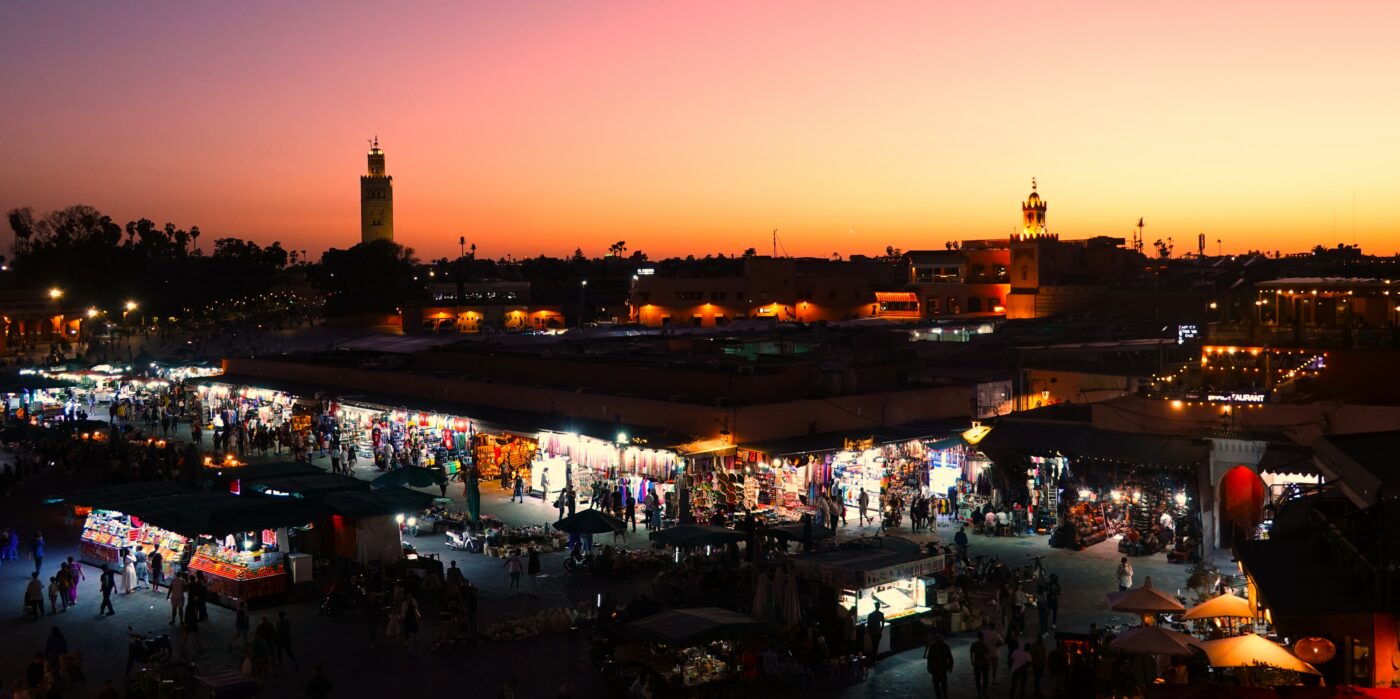4 days in Marrakech, often called the “Red City” due to the color of its buildings, is one of Morocco’s most famous and historically significant cities. Founded in 1070 by the Almoravid dynasty, it quickly became a powerful political, economic, and cultural hub in the region.
Marrakech was a key city in the trans-Saharan trade routes, connecting Africa with Europe and the Middle East. Over the centuries, it attracted traders, scholars, and artisans from across the world, helping to shape its rich cultural heritage. The city played a central role in the history of Morocco, serving as the imperial capital several times. Most notably under the Saadian dynasty in the 16th century, which oversaw a golden age of art and architecture.
Today, Marrakech is a major tourist destination, known for its vibrant souks, historic palaces, and the bustling Djemaa el-Fna square. The city blends traditional Moroccan culture with modern amenities, offering visitors a unique glimpse into both its rich past and its evolving present.
We stayed 4 days in Marrakech. What surprised us, was how relaxed the general atmosphere towards us tourists was. We captured as much as we could in this blog and we are happy to share it with you. For those who prefer to see a video of our 4 days in Marrakech, should scroll down to the video. We hope you experience much reading pleasure, and that we were able to convey the Marrakech ”feeling” into this blog.
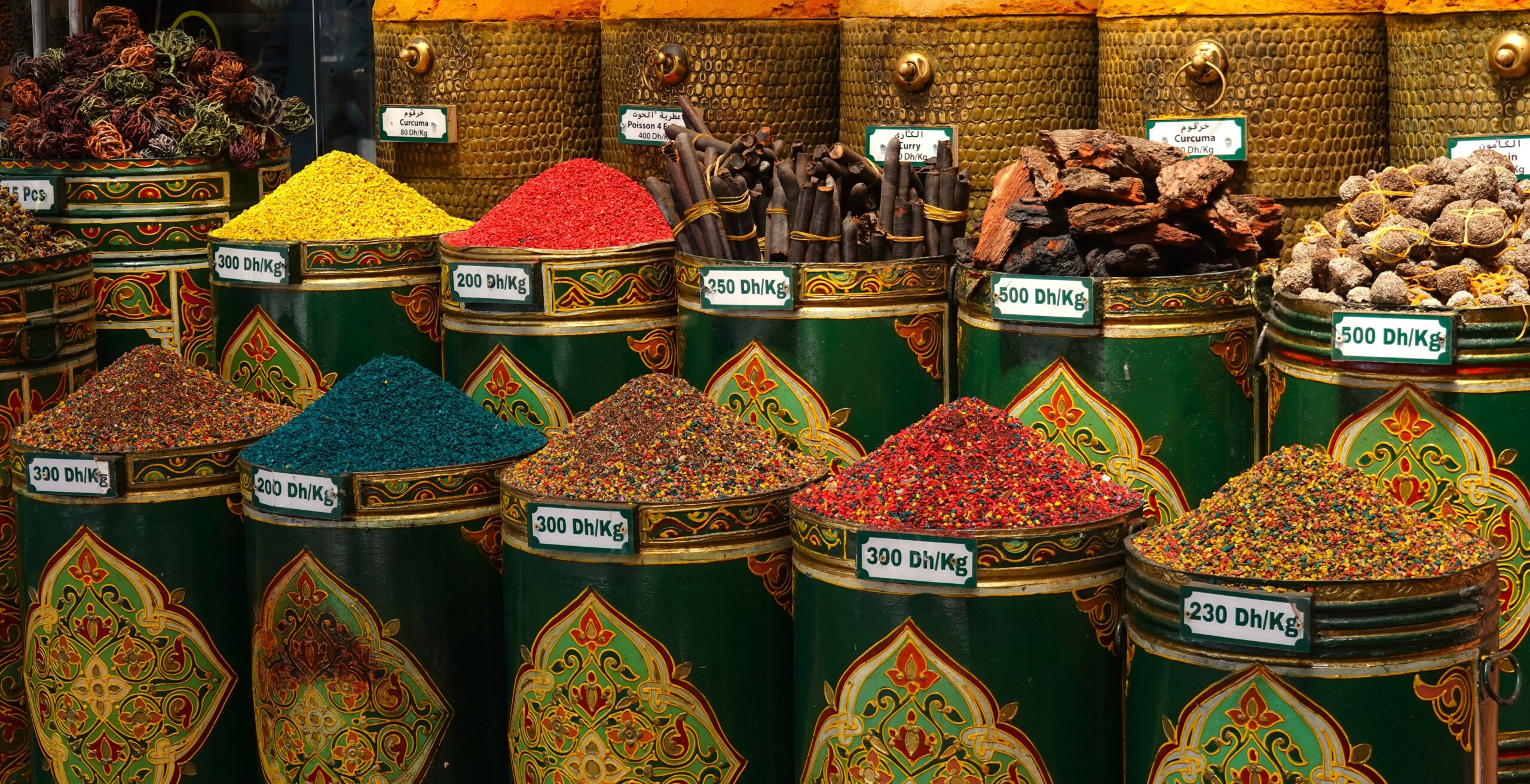
DAY I
Arriving at Ryad Selyen
We arrived in Marrakech around noon and were taken by a taxi that was arranged by Ryad Selyen. We then were dropped off 50 meters away from the Riad. Someone from the staff was waiting for us and guided us to our accommodation.
Riads are traditional Moroccan houses or palaces, characterized by inward-facing architecture with a central courtyard or garden. The design reflects Islamic values of privacy and intimacy, shielding the home from the outside world while creating a tranquil space inside. Staying in a riad is a popular way for visitors to experience the city in a more personal and serene setting.
We stayed at the cozy and beautiful Ryad Selyen. The service from the staff was unmatched. We had breakfast included and it was freshly made and served every day. It was versatile and incredibly nourishing. The location was perfect in the middle of the Medina. It had an easy route towards the hotspots such as the famous Djemaa el-Fna square.
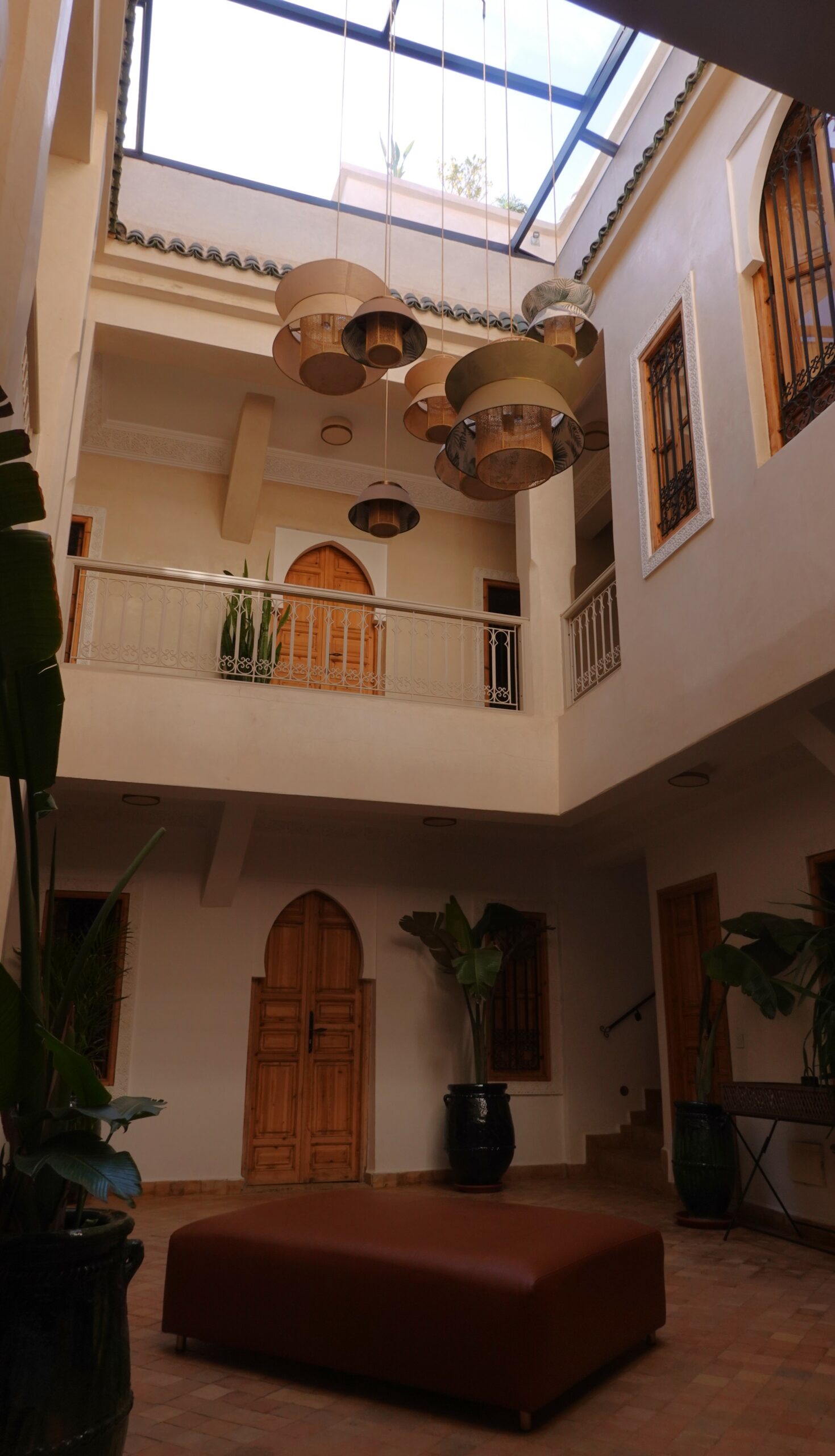
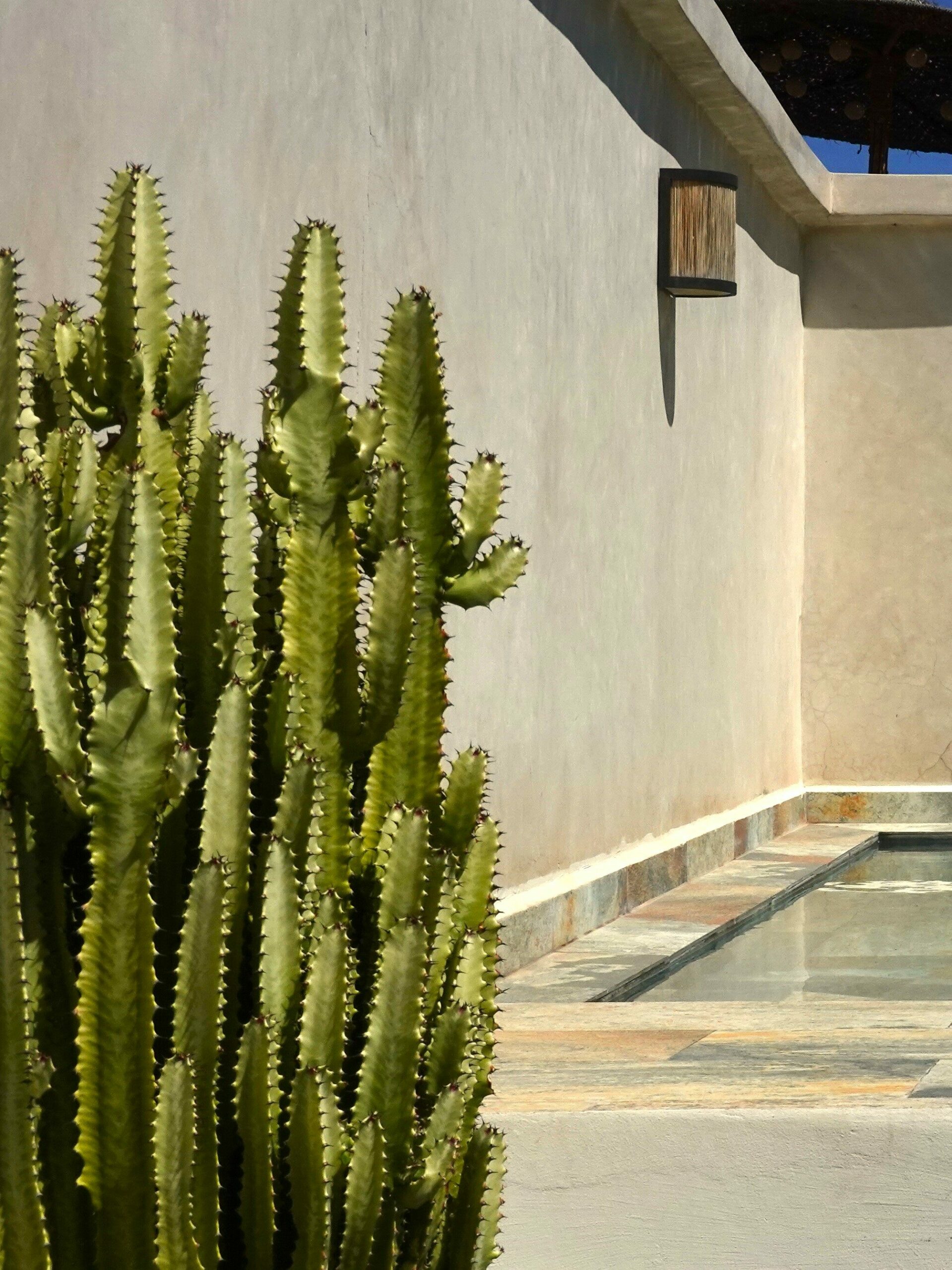
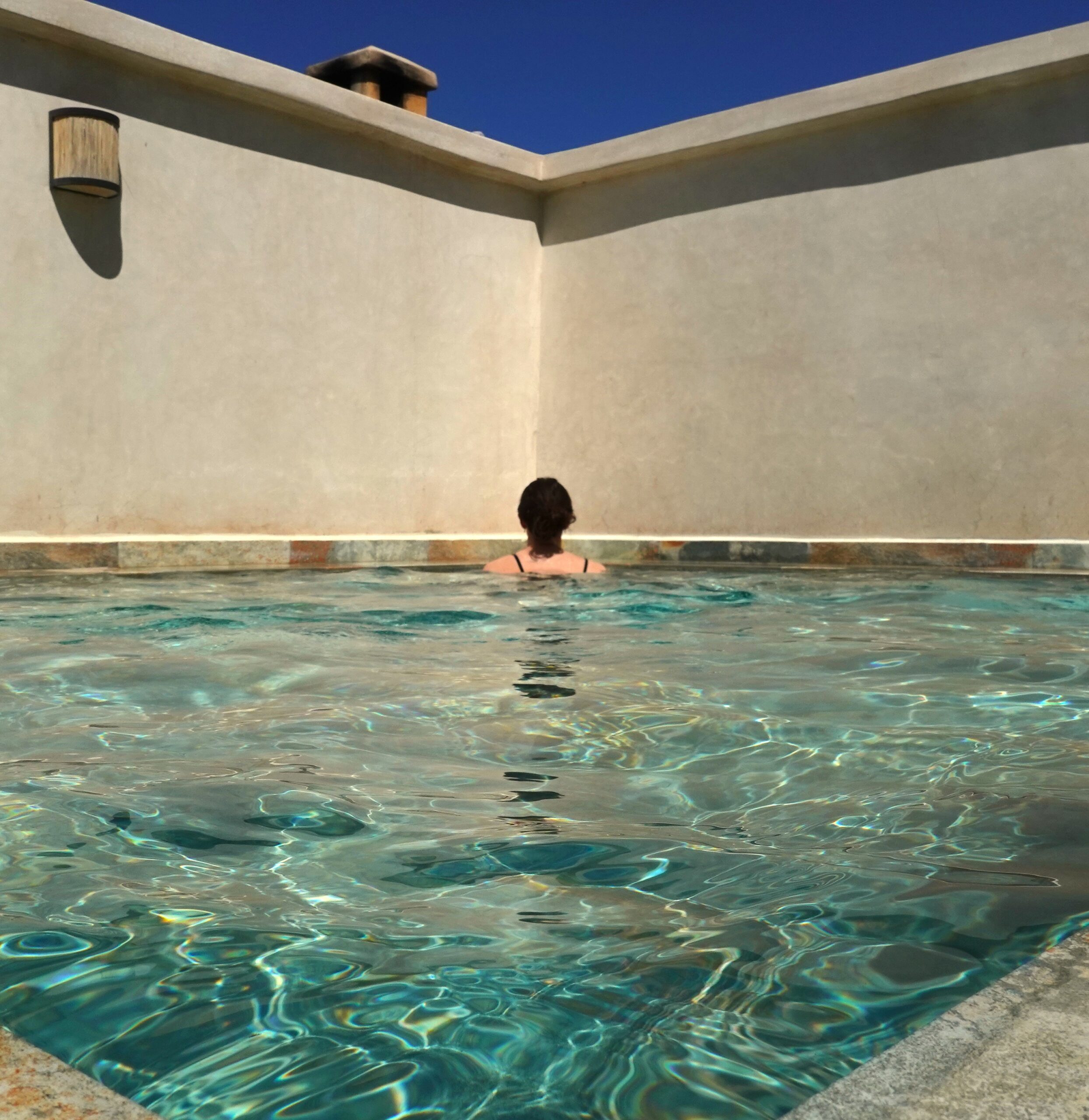
Exploring the medina
Given the location of our Riad, the most logical first activity was to explore the Medina. We recommend that everyone get lost on purpose in the famous souks. Let go of your planning for a while and let your senses guide you. There is so much to see, smell and feel. It’s a great first activity for your 4 days in Marrakech.
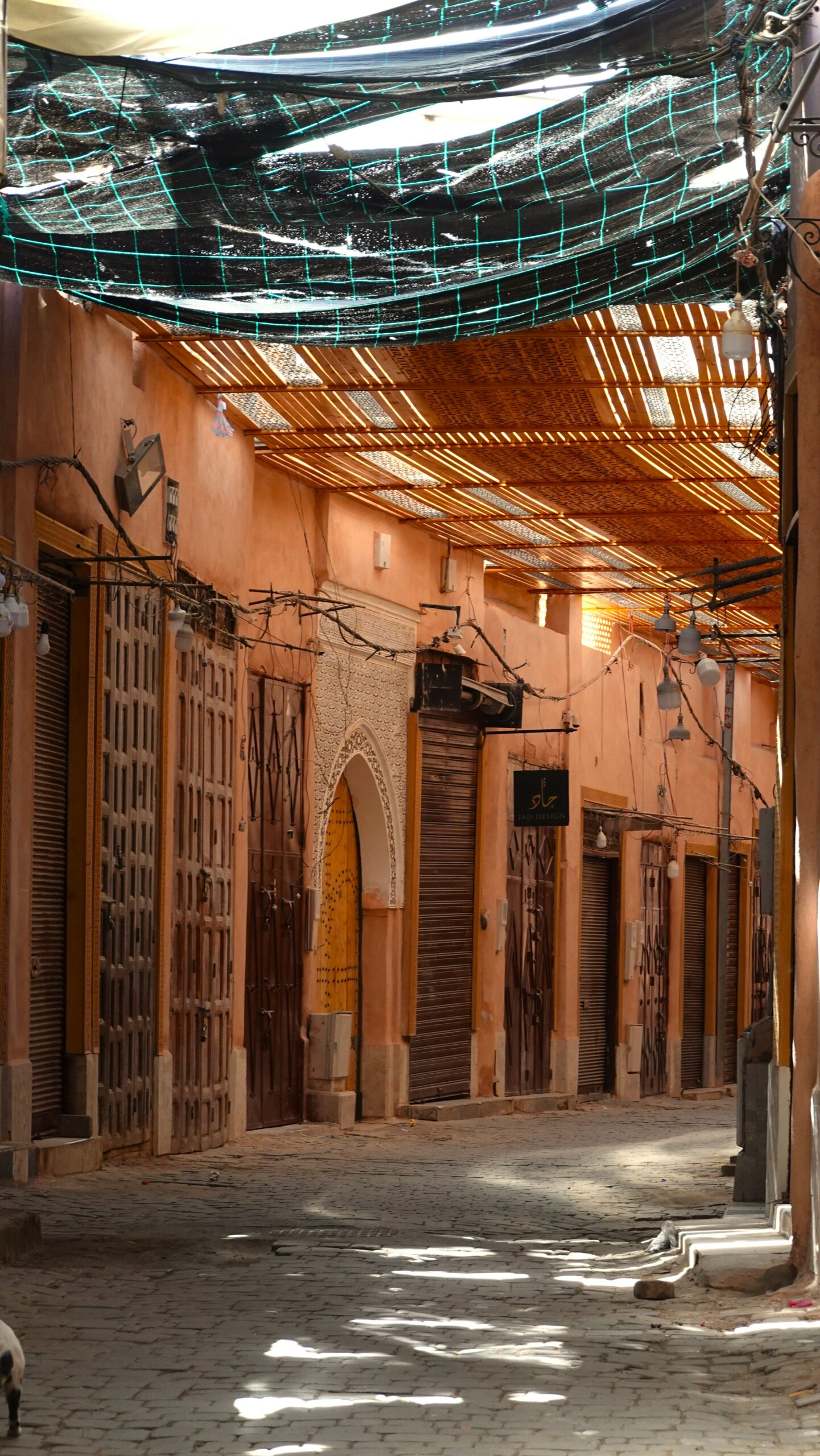
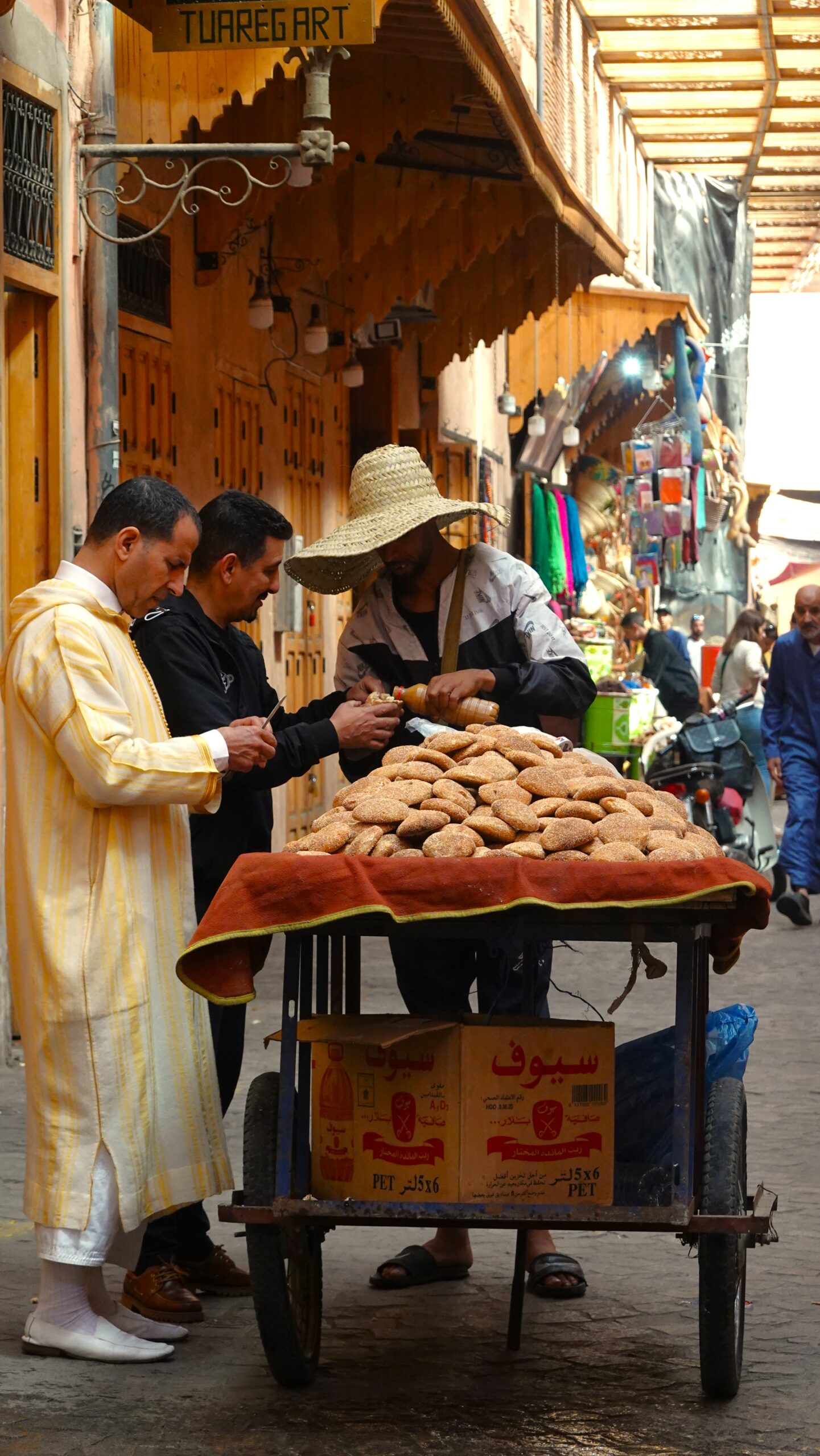
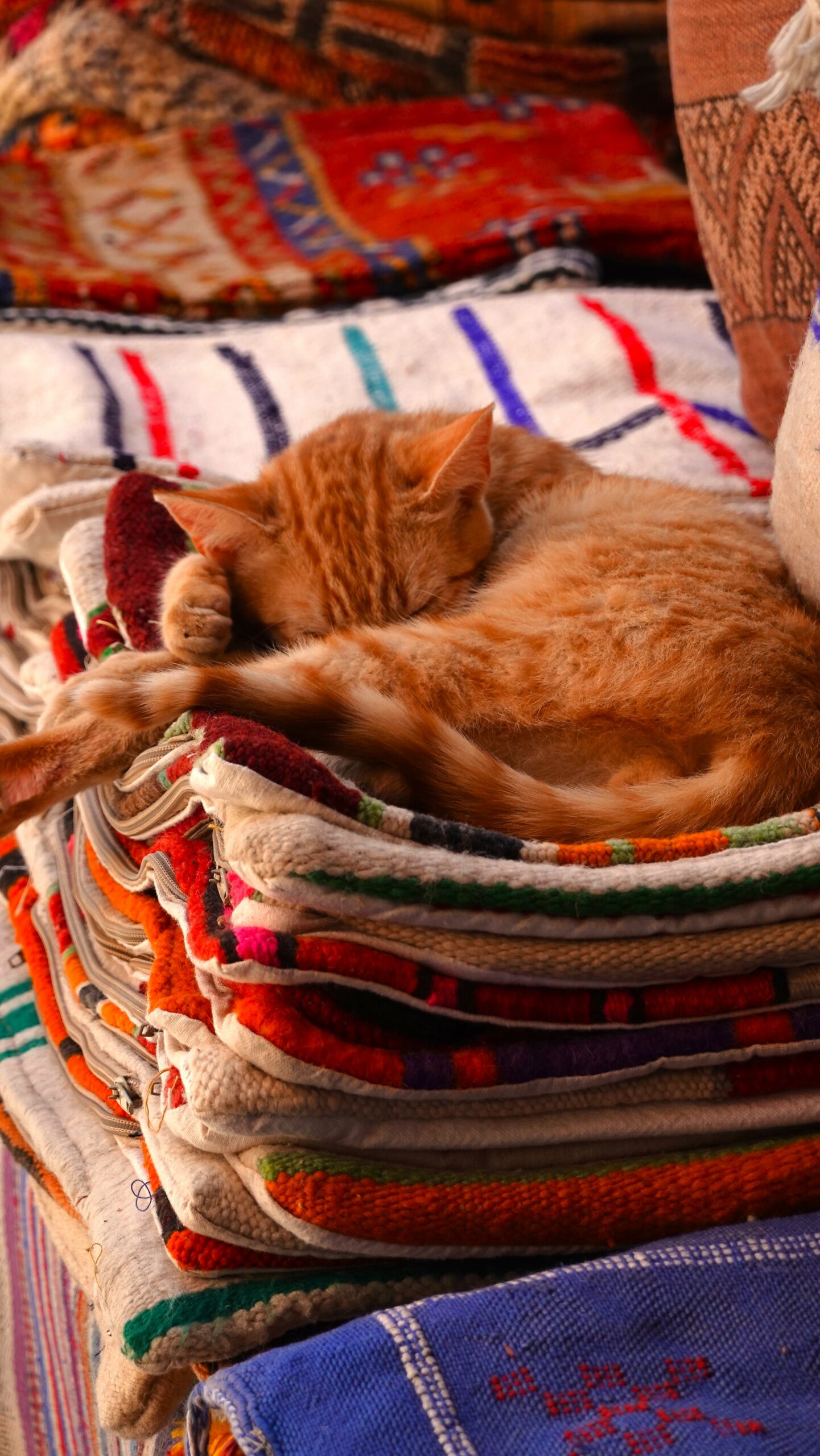
The souks also have a side you have to be careful of. We won’t go into that in this blog, but you can read this in our blog explicitly about the souks trough this link.
Lunch at Amor N Akoch
For a delicious lunch overlooking the Djemaa el-Fna square, you’ll be in good hands at Amor N Akoch.
Koutoubia Mosque
From Amor N Akoch, walk through the Djemaa el-Fna square towards the Koutoubia Mosque. In your 4 days Marrakech, people will approach you. If you don’t want them to, then it’s best to ignore them or resolutely indicate that you are not interested. Then they won’t bother you any further.
The Koutoubia Mosque, Marrakech’s largest and most iconic mosque, was built during the 12th century under the Almohad Caliph Abd al-Mu’min. It stands on the site of a former Almoravid mosque and was completed around 1157.
Although the Koutoubia Mosque remains an active place of worship, it is not open to non-Muslim visitors. This is in line with Moroccan Islamic tradition. However, tourists can admire its exterior and explore the surrounding gardens, which offer beautiful views of the mosque’s architecture.
Djemaa el-Fna Square
From the Koutoubia mosque it is, the most fun to walk back slowly to the Djemaa el-Fna square. In Marrakech, it is important not to be in a hurry. Enjoy the experience and go with the flow of Marrakech’s daily life. It is hectic, but this is part of the experience. With a day planned too full you are definitely going to get frustrated.
Djemaa el-Fna, the heart of Marrakech, has been a vibrant public square and marketplace since its founding in the 11th century. Historically, it was a meeting point for traders, storytellers, and entertainers from across Morocco and beyond. Over time, it evolved into a bustling cultural hub where daily life unfolds. Its name thought to mean “Assembly of the Dead,” possibly referencing public executions once held there.
Today, Djemaa el-Fna is renowned for its lively and dynamic atmosphere, especially in the evenings. The square comes alive with street performers, musicians, and food vendors, creating a sensory overload of sights, sounds, and smells. Visitors experience a unique fusion of traditional Moroccan entertainment and a buzzing marketplace. It offers an unforgettable glimpse into Marrakech’s cultural soul. Therefore, you absolutely cannot miss this square during your 4 days in Marrakech.
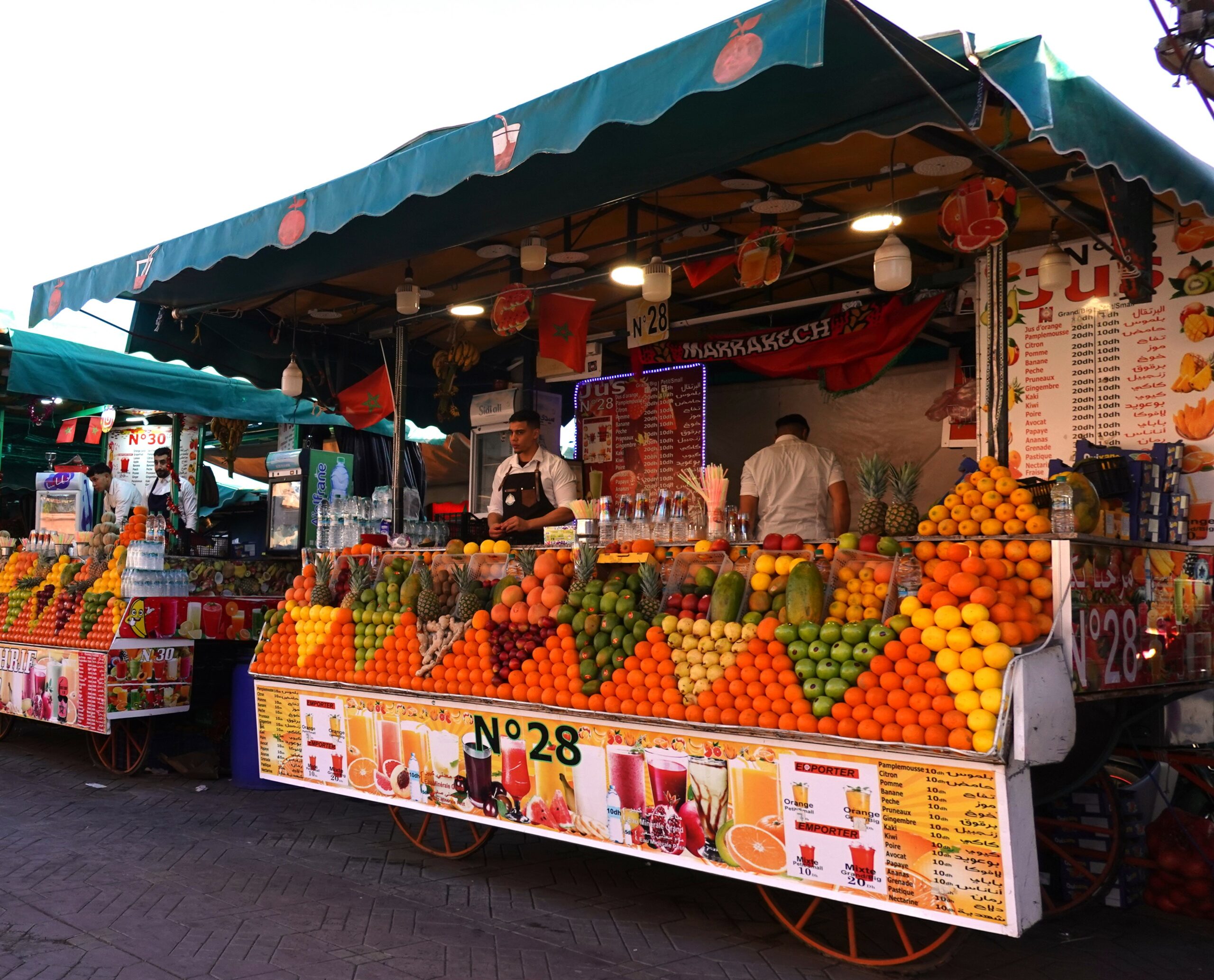
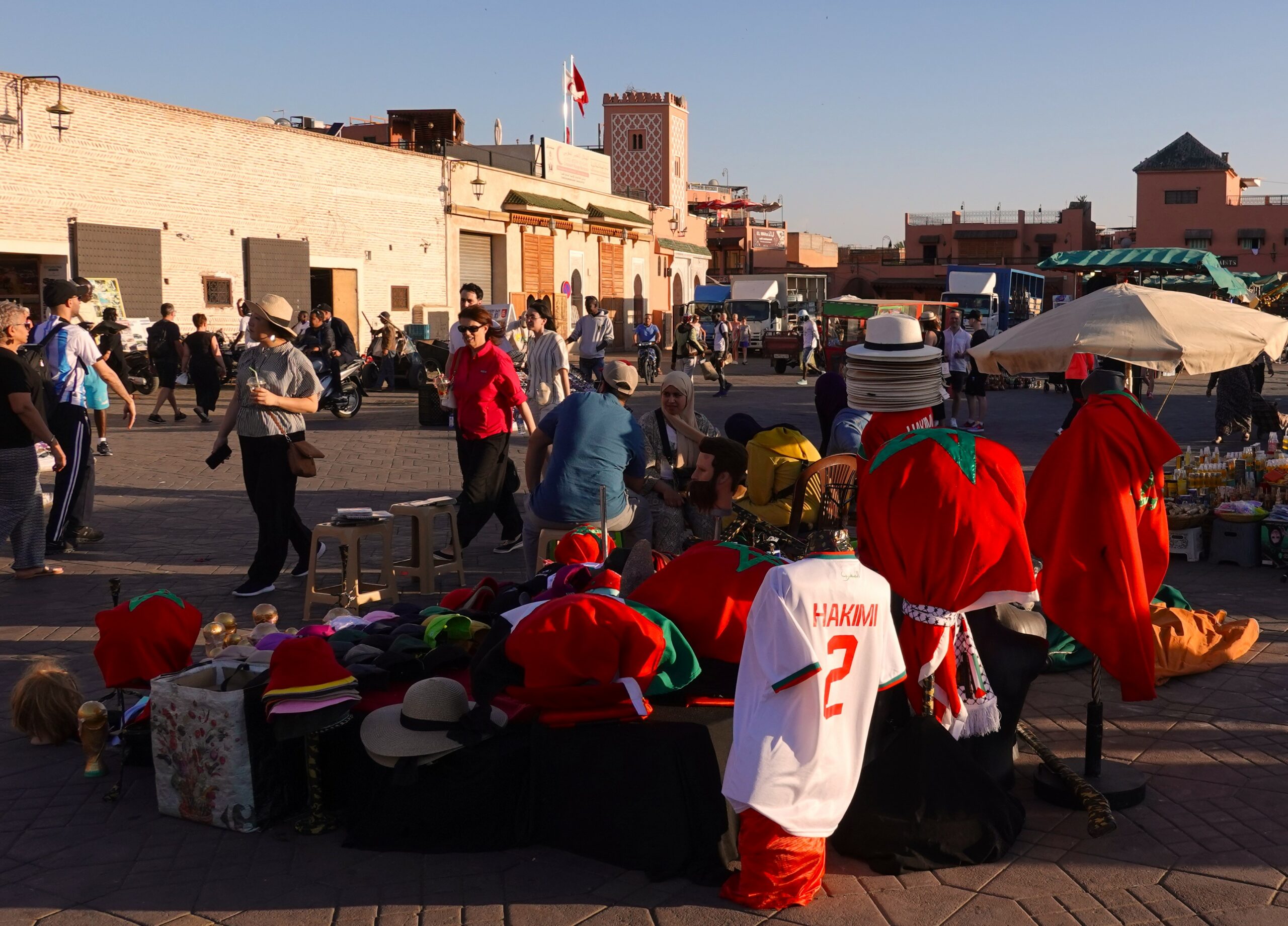
DAY II
Day II started with a good breakfast in our Riad. While the first day was about exploring and seeing what came our way, the second day we really wanted to see some wonderful sights.
The Madrasa Ben Youssef
The madrasa is an exemplary piece of Islamic architecture, showcasing intricate craftsmanship. Its main courtyard is a stunning feature, surrounded by arcades, with a large rectangular pool in the center, evoking a sense of tranquility and spiritual reflection.
At its peak, the madrasa housed up to 900 students in over 130 dormitory rooms surrounding the central courtyard. This made it one of the largest educational institutions in North Africa during its time.
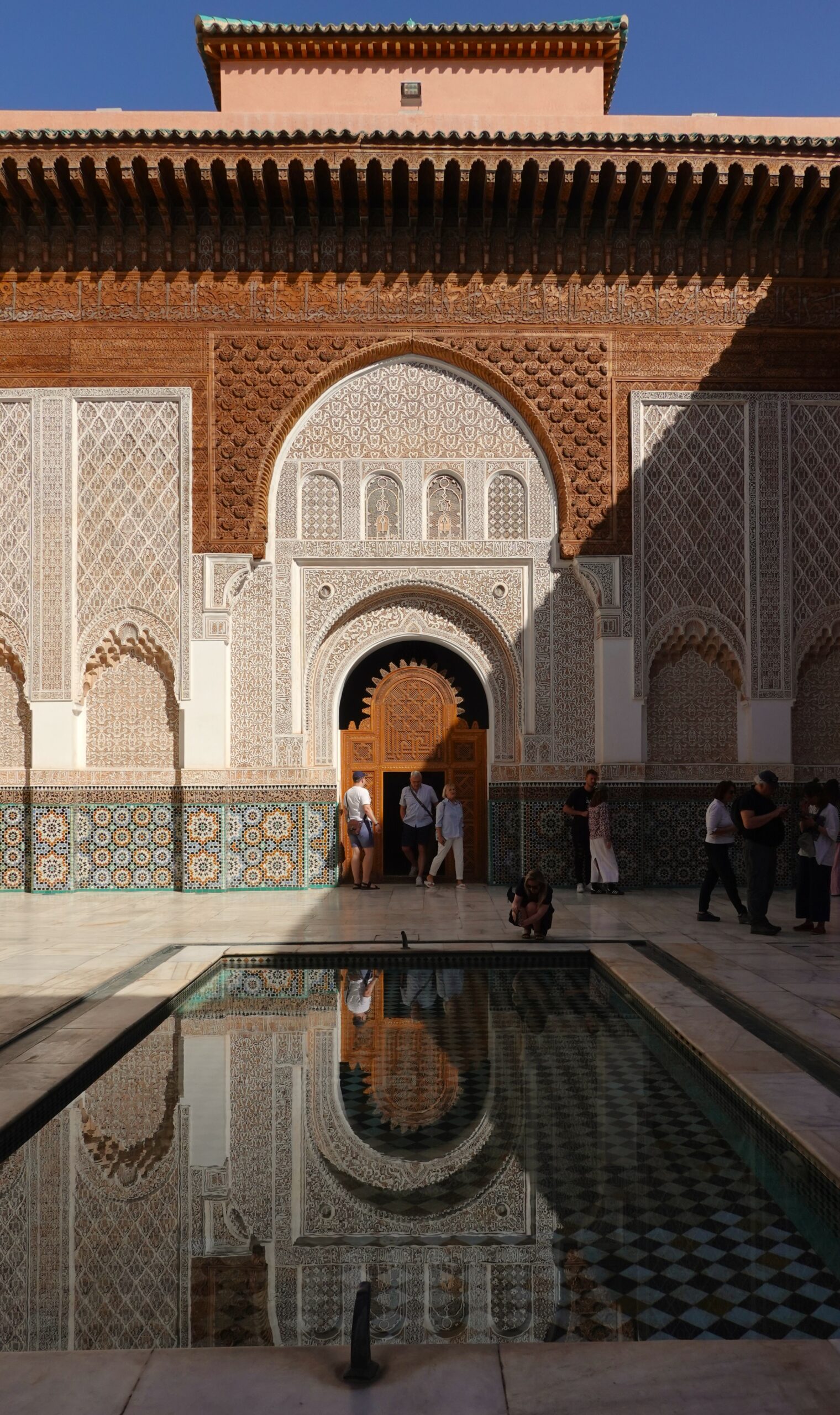
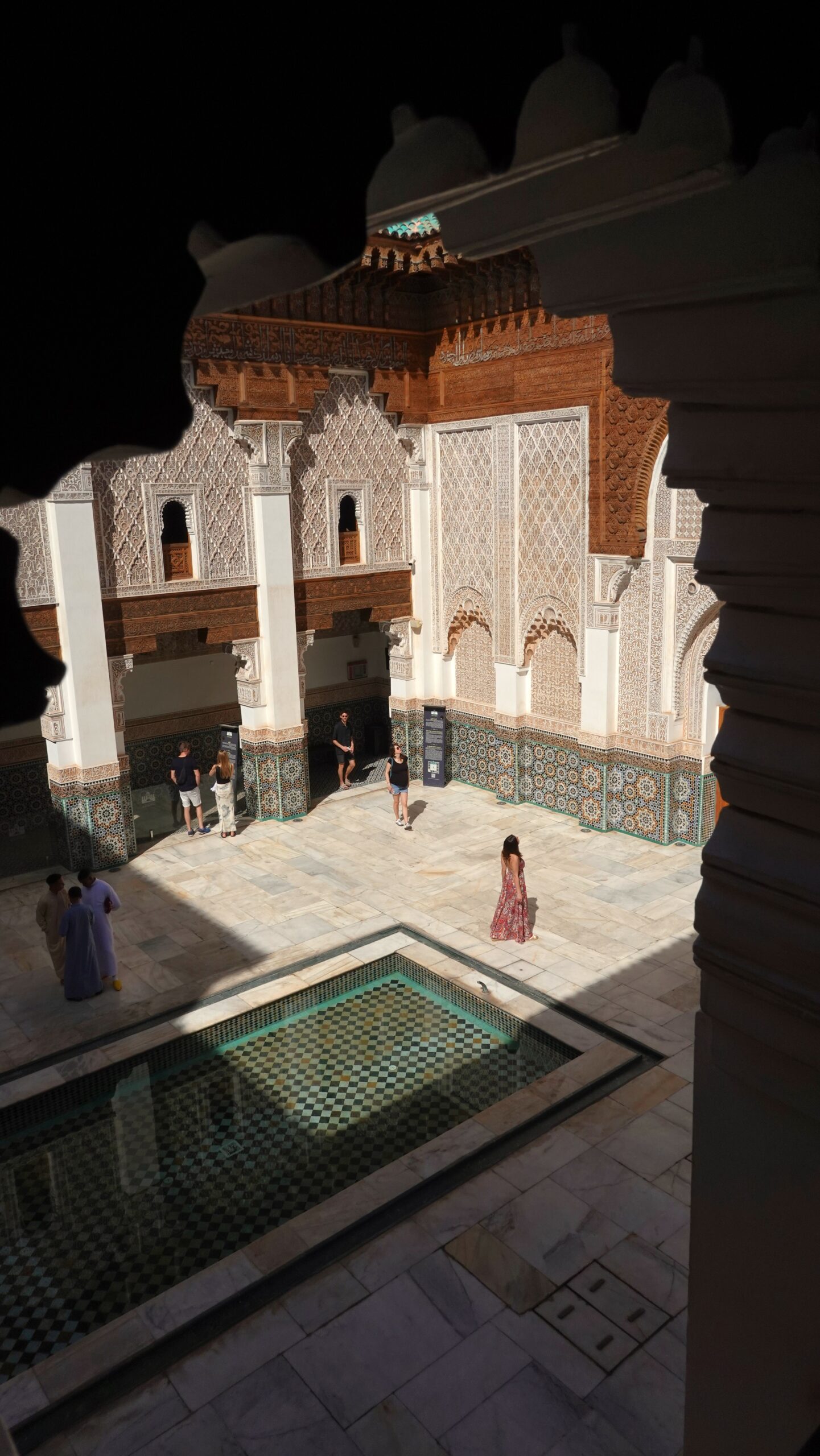
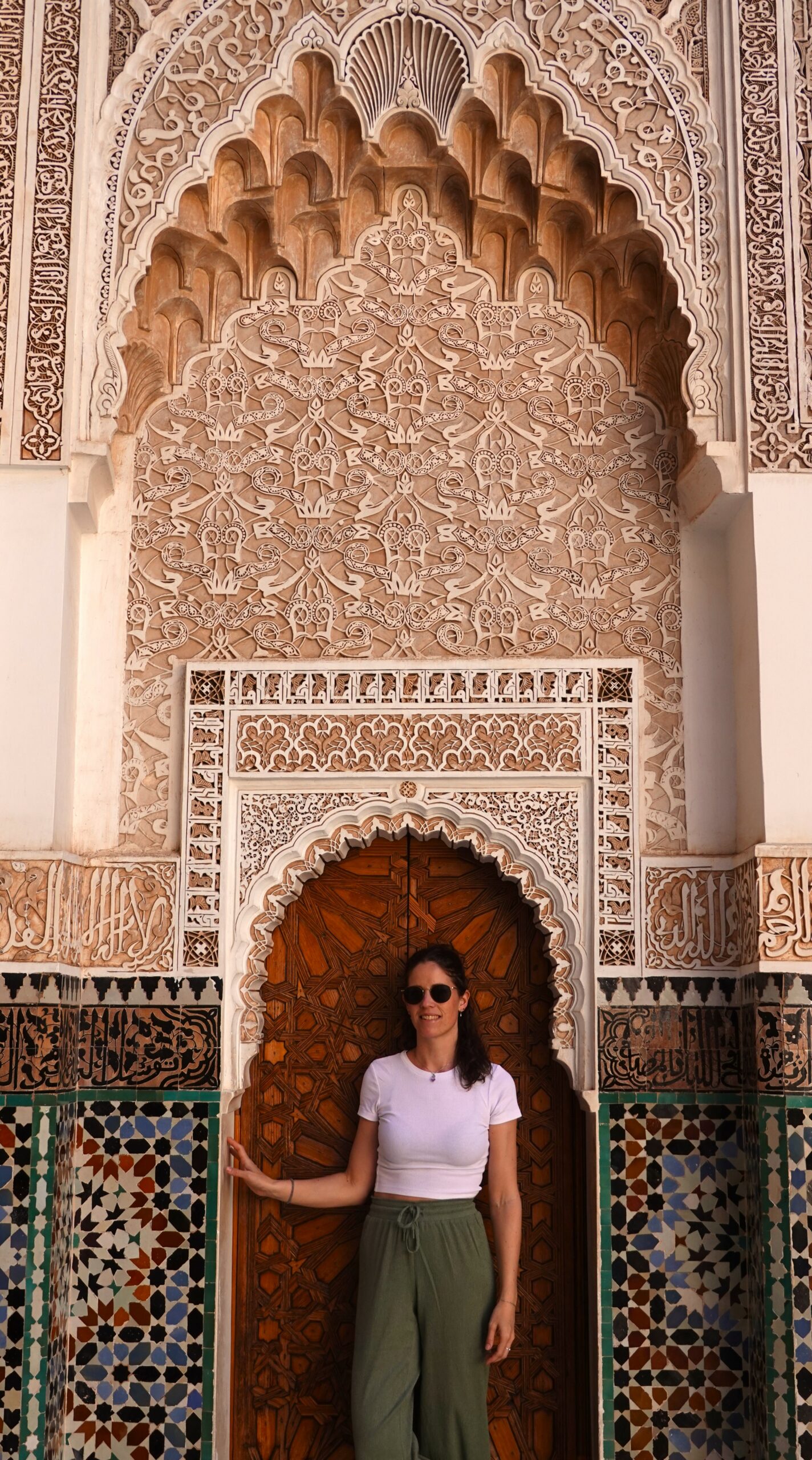
Today, the madrasa is a popular tourist destination, attracting visitors who wish to explore its stunning architecture and historical significance. The site is located in the heart of Marrakech’s medina, near other major attractions such as the Marrakech Museum and the Almoravid Koubba.
Visitors can explore the grand courtyard, student dormitories, and prayer halls, with detailed craftsmanship visible at every turn.
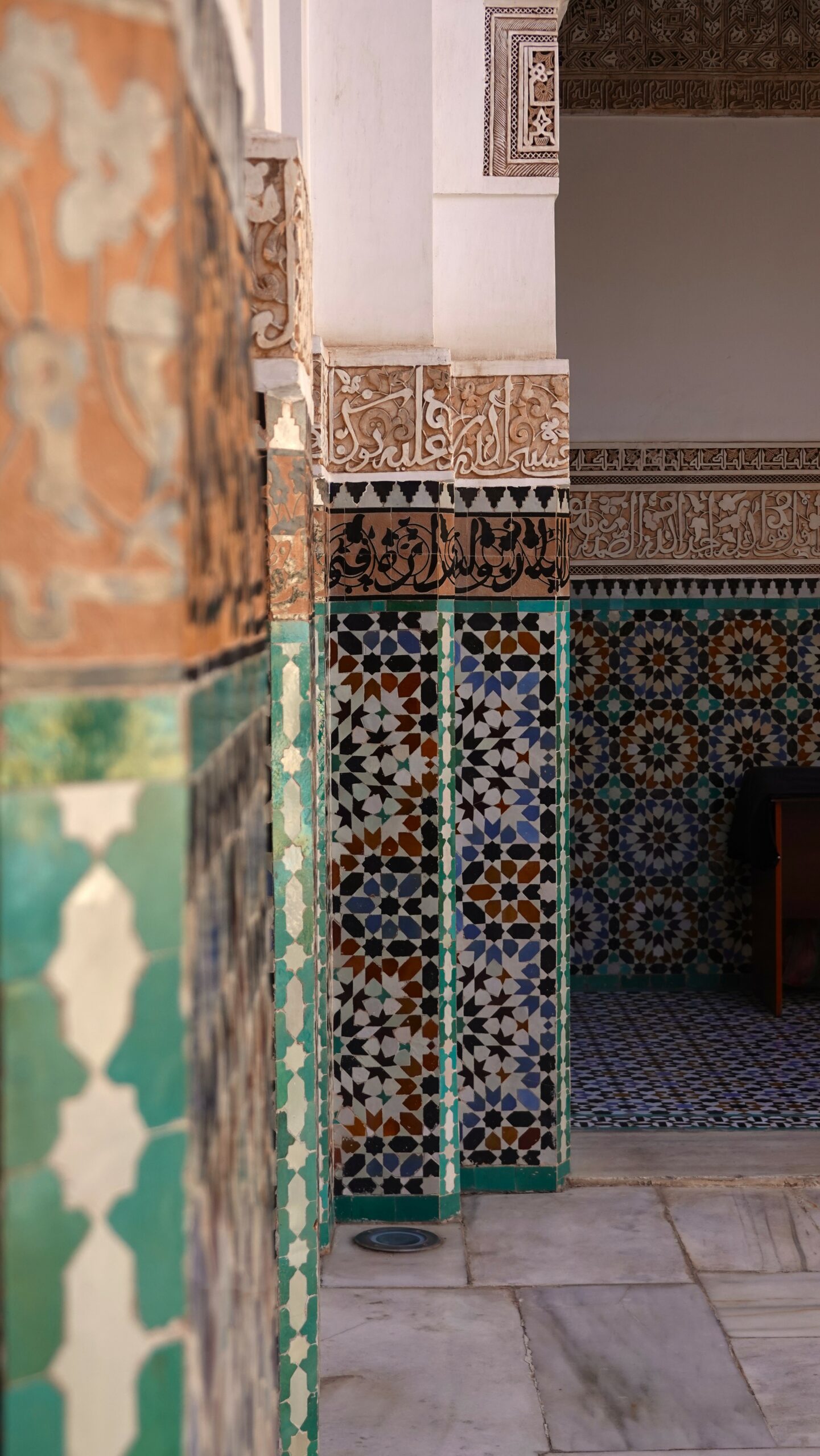
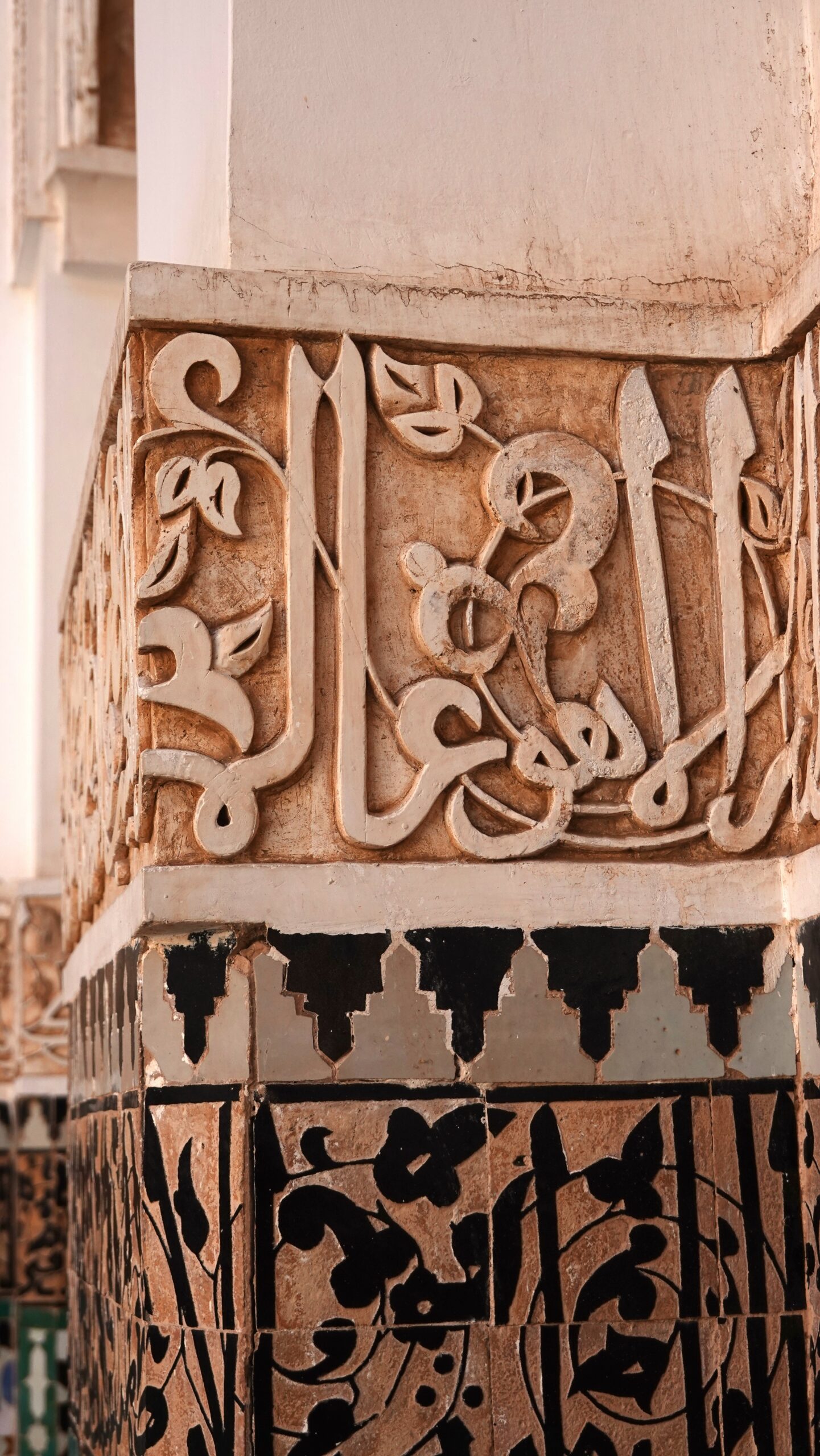
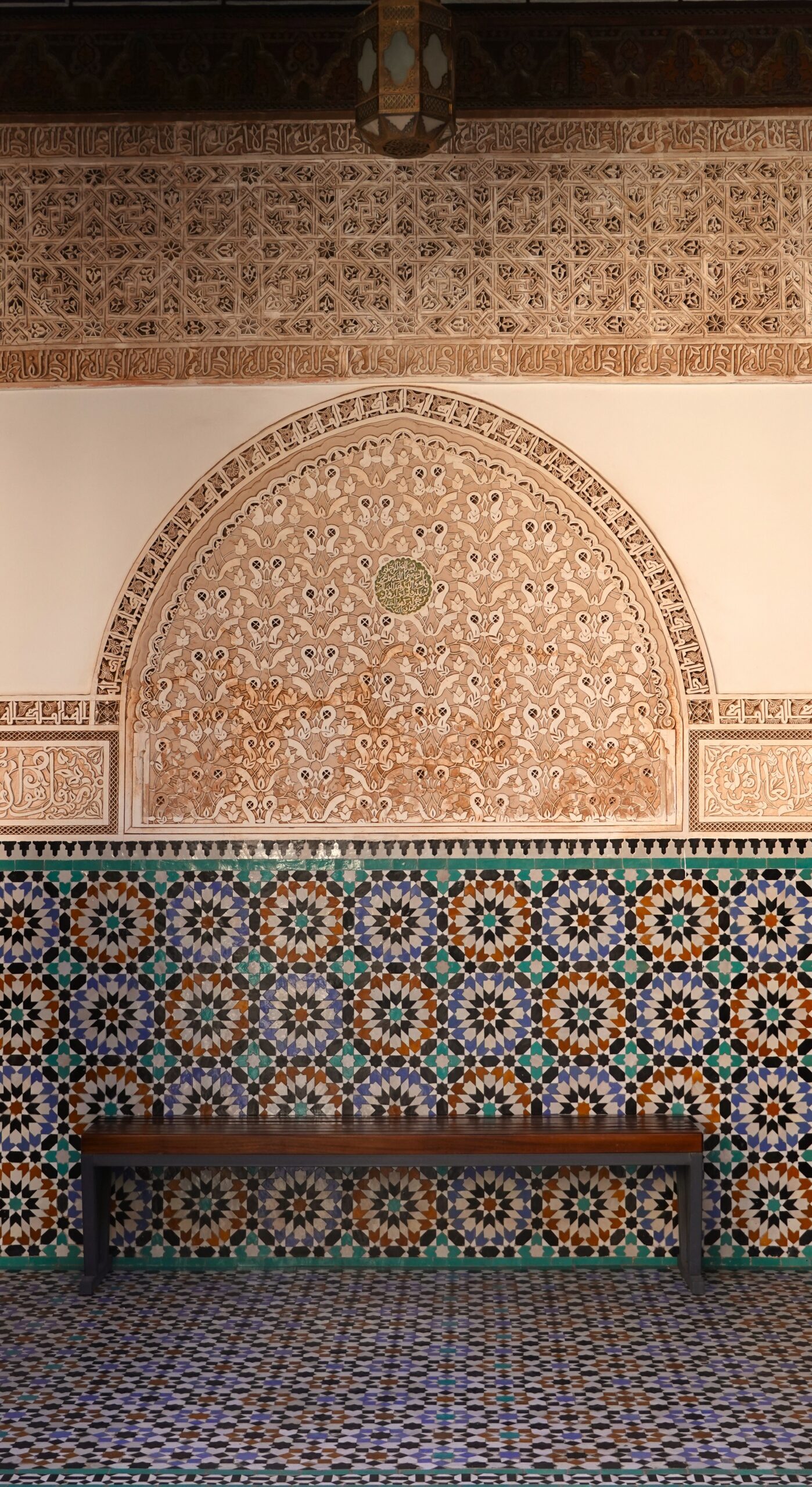
Practical Information:
- Opening Hours: Typically open daily from 9:00 AM to 5:00 PM, but it is best to check current schedules as they may vary.
- Entrance Fee: There is a modest admission fee, around 50 MAD (Moroccan dirhams).
- How to Get There: Located in the medina of Marrakech, it can be reached by foot if you’re staying nearby or via a short taxi ride. It is advisable to explore it as part of a visit to the medina’s historic sites.
Lunch at Zeitoun Cafe
After visiting our first sight, we went for lunch at the Zeitoun Cafe. The restaurant/cafe has nice seating areas on the 1st floor, where you can enjoy delicious food at a fair price. While eating, you can enjoy all the hustle and bustle happening in the streets below you.
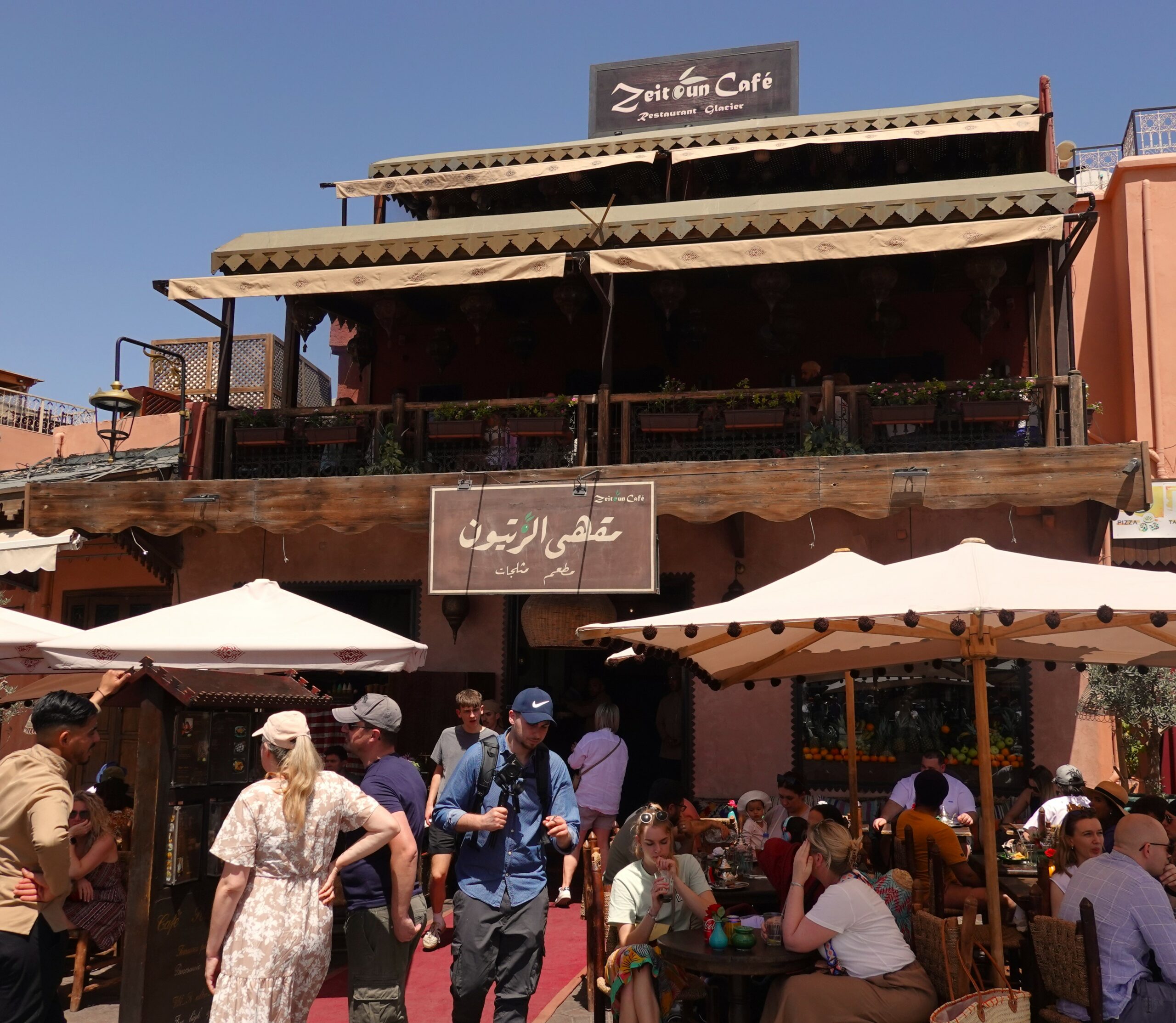
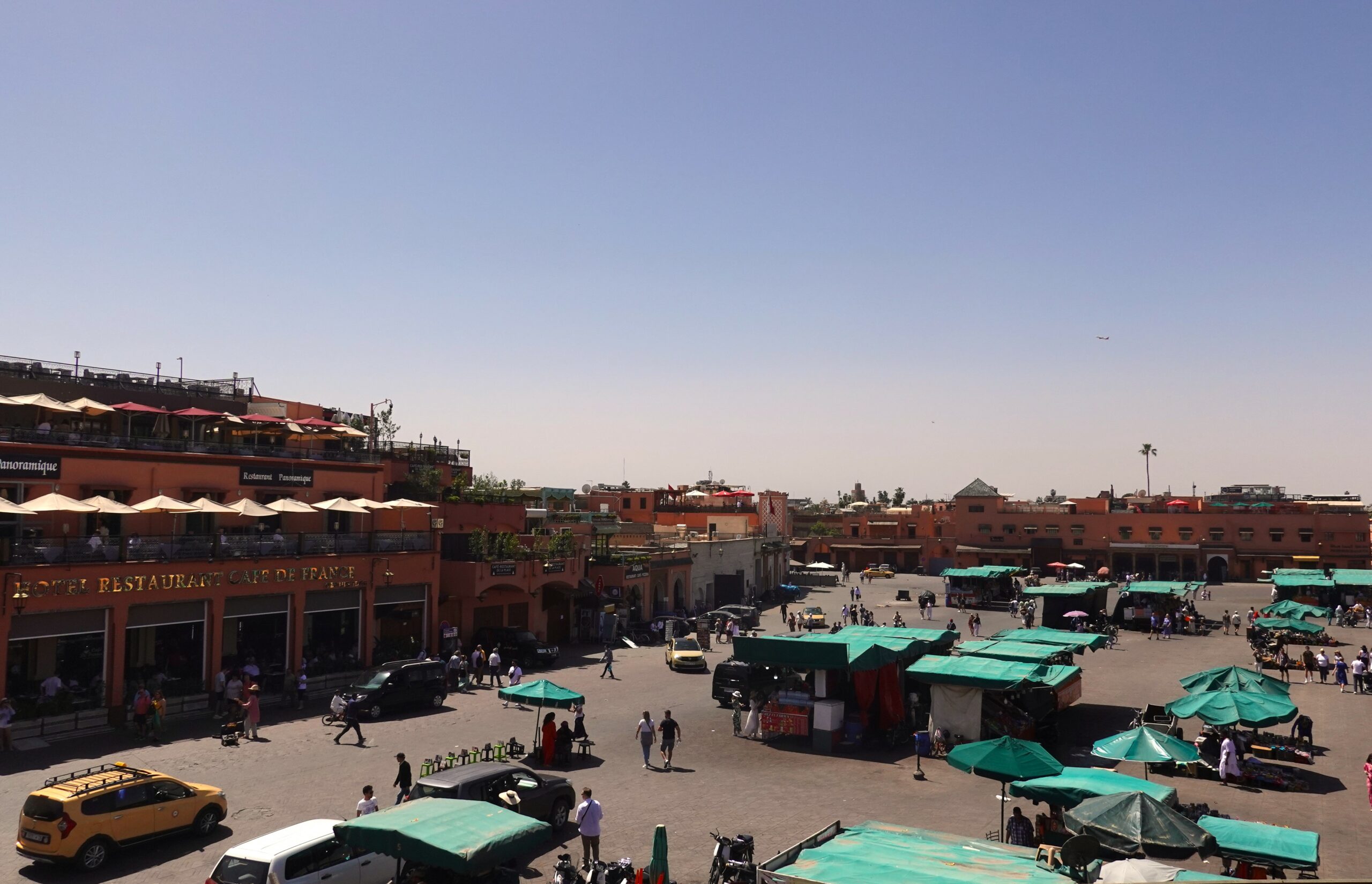
El Badi Palace
The El Badi Palace is one of the most iconic historical landmarks in Marrakech, Morocco. Built in the late 16th century by Sultan Ahmad al-Mansur of the Saadian dynasty. Its name, meaning “The Incomparable Palace,” reflects its original splendor.
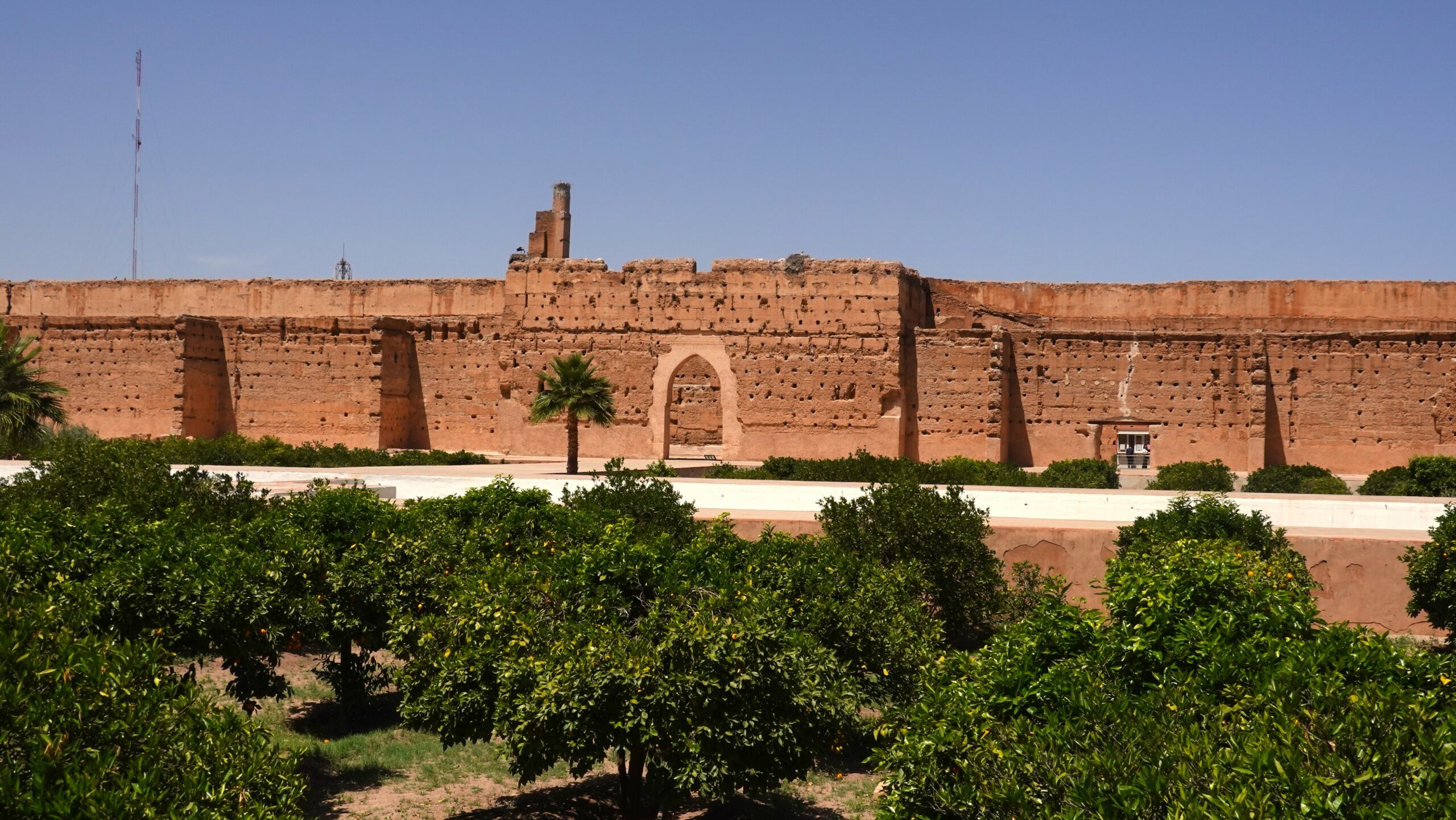
Visiting El Badi Palace Today:
El Badi Palace is now an open-air museum, allowing visitors to explore its grand ruins and visualize its former glory. While much of the original splendor is gone, the massive walls, courtyard, and some remnants of the original decoration give visitors a sense of its past magnificence.
- Main Attractions:
- The vast courtyard with its sunken gardens and reflecting pools.
- The Minbar of the Koutoubia Mosque, a stunning wooden pulpit with intricate carvings, displayed in one of the palace’s rooms.
- Stunning views from the top of the palace walls, offering panoramic vistas of Marrakech’s medina and the Atlas Mountains.
Practical Information:
- Opening Hours: Generally open daily from 9:00 AM to 5:00 PM, but times may vary, especially on holidays or for restoration work.
- Entrance Fee: The admission fee is around 70 MAD (Moroccan dirhams).
- How to Get There: El Badi Palace is located in the southern part of the medina of Marrakech, close to the Saadian Tombs and the Mellah (the old Jewish quarter). It is easily accessible by foot or a short taxi ride from most central parts of the city.
El Badi Palace offers a fascinating glimpse into Morocco’s imperial past and the grand ambitions of the Saadian dynasty. Therefore it’s a must-visit within your 4 days in Marrakech for history and architecture enthusiasts.
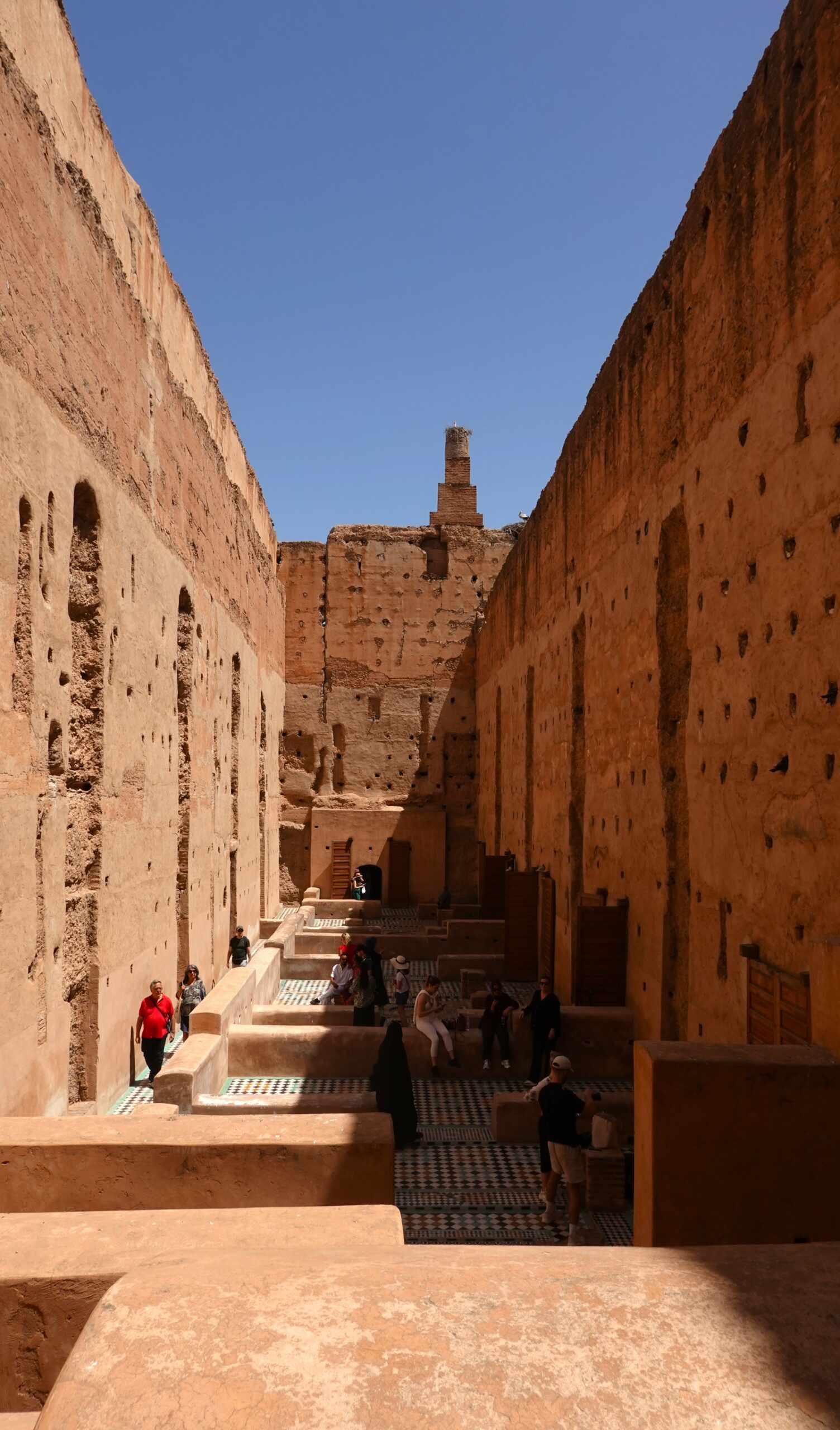
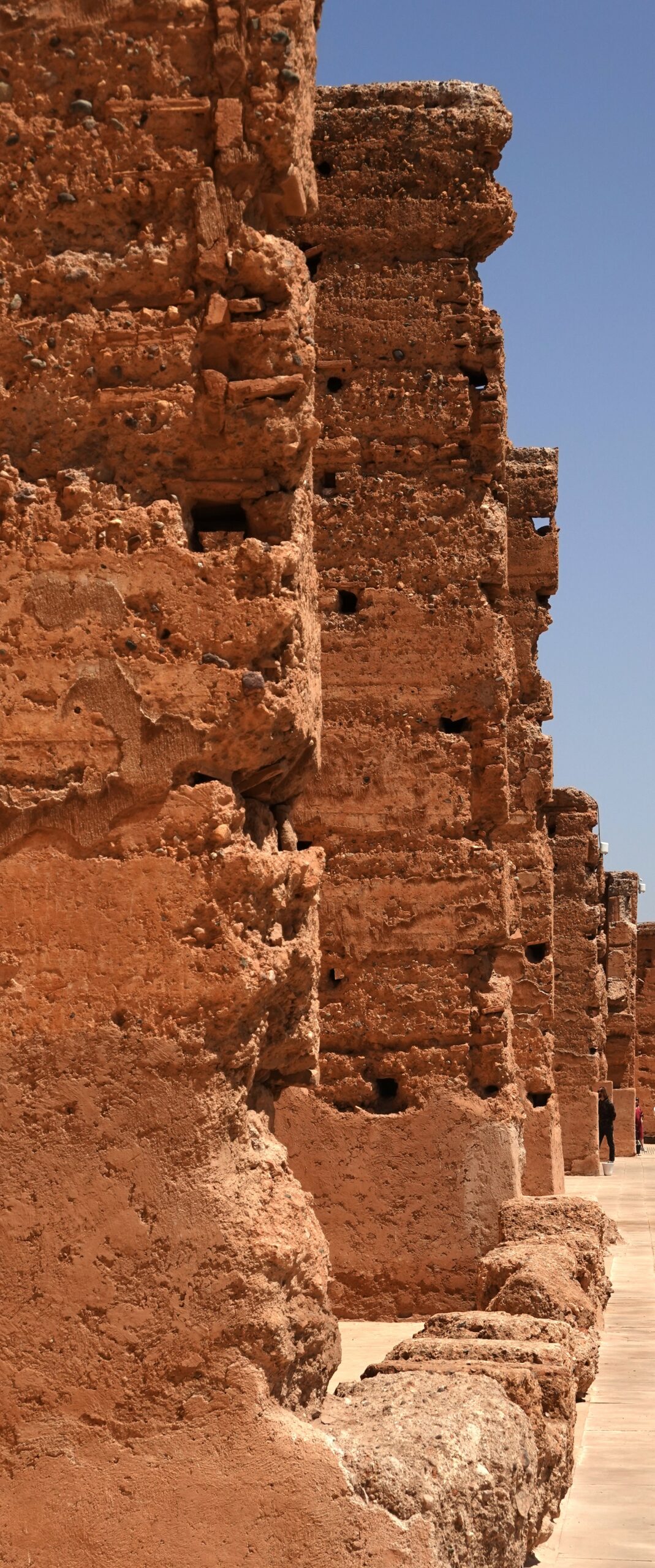
Saadian Tombs
The Saadian Tombs in Marrakech are a historic necropolis that dates back to the late 16th century. It served as the burial site for members of the Saadian dynasty. The tombs were rediscovered in 1917, after being sealed and hidden for centuries by Sultan Moulay Ismail in the late 17th century. He attempted to erase the Saadian legacy but left the tombs intact, merely bricking up the entrances to the site.
The most famous section is the Hall of the Twelve Columns, which houses the tomb of Ahmad al-Mansur, featuring a lavish dome and pillars made of marble
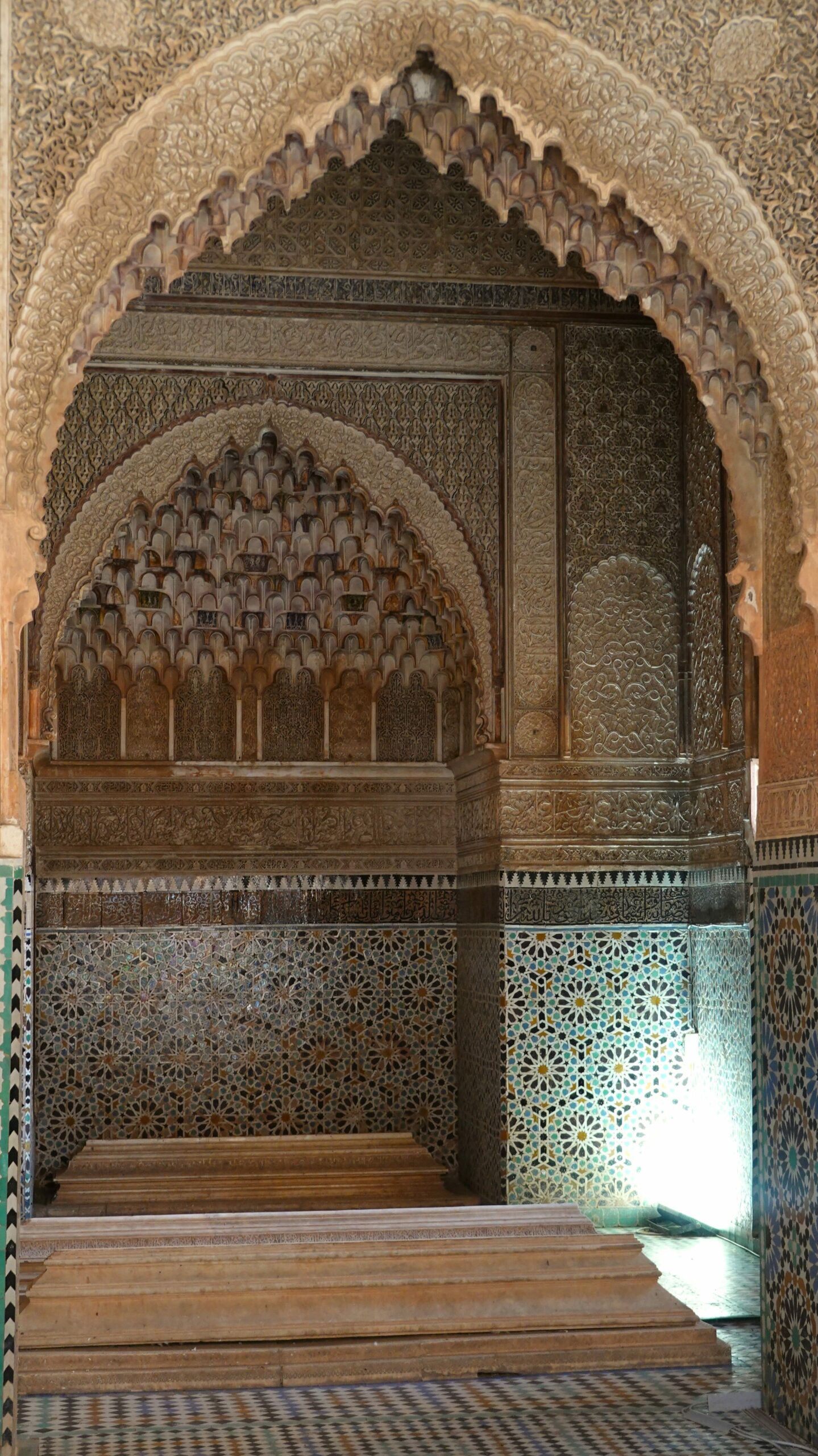
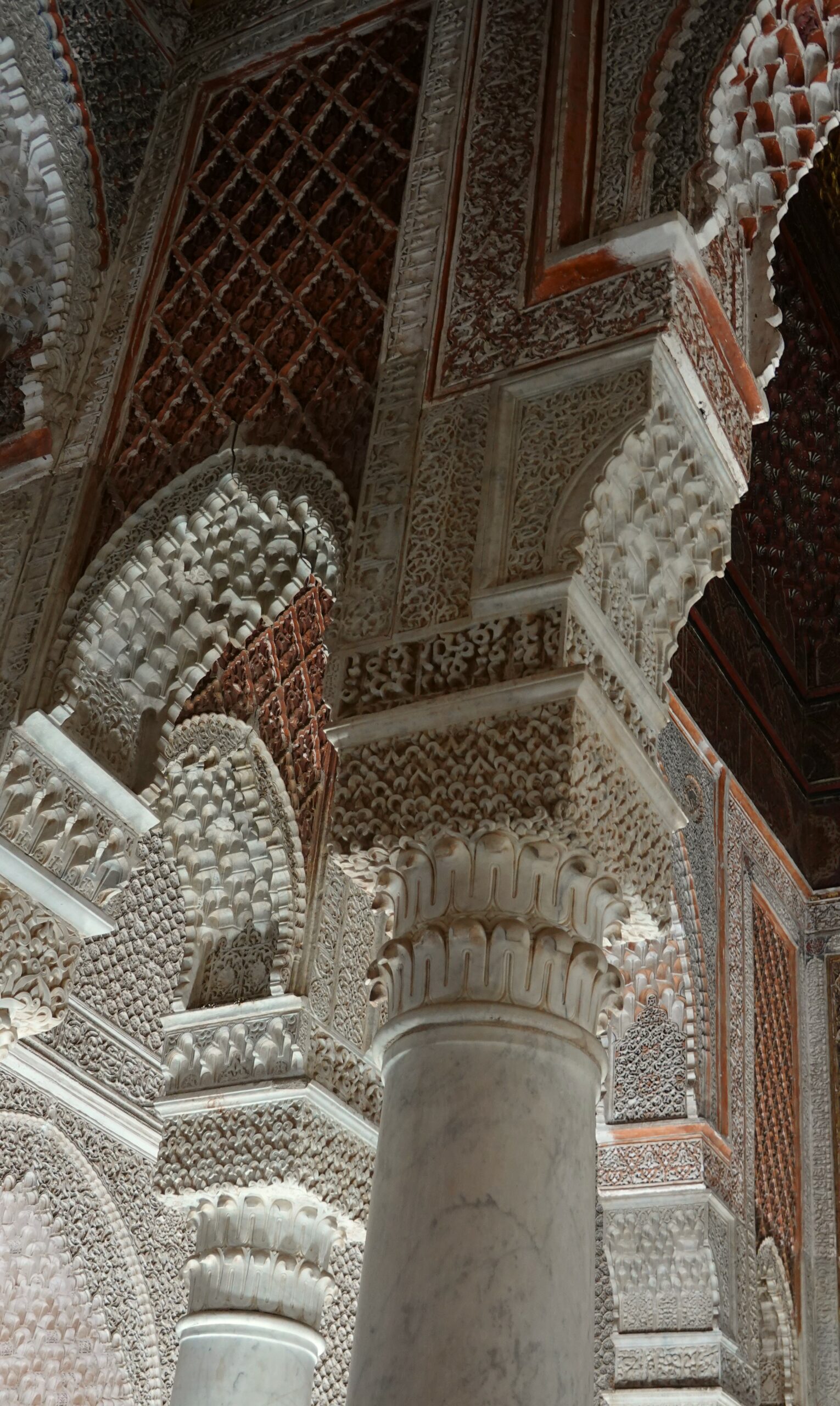

Visiting the Saadian Tombs Today:
Today, the Saadian Tombs are a popular tourist attraction, offering visitors a chance to witness one of Marrakech’s best-preserved historical sites. Since the tombs were sealed off for centuries, they remain in remarkably good condition, providing a glimpse into Morocco’s rich past.
- Main Attractions:
- The Hall of the Twelve Columns, with its marble columns, richly decorated ceilings, and the tomb of Sultan Ahmad al-Mansur.
- The tombs of other Saadian royals and officials, set amidst serene gardens.
- The intricately decorated mausoleums, offering an excellent example of Saadian artistry.
Practical Information:
- Opening Hours: The tombs are typically open daily from 9:00 AM to 5:00 PM, but it’s advisable to check for any holiday closures or schedule changes.
- Entrance Fee: Admission is generally around 70 MAD (Moroccan dirhams).
- How to Get There: The Saadian Tombs are located in the Kasbah district of Marrakech’s medina, near the El Badi Palace and the Kasbah Mosque. They are easily accessible by foot from nearby attractions or by a short taxi ride.
Drinks at La Terrasse du Marché
Since it can be well above 30 degrees Celsius in Marrakech in March, it is important to keep yourself hydrated. It is best to carry a bottle of water with you at all times. One place where you can also drink delicious milkshakes is La Terrasse du Marché. Sit inside or on the terrace overlooking a lively traffic circle.
The Bahia Palace
The Bahia Palace was built to house Si Moussa’s official court and family, and later became the residence of Ba Ahmed, the most powerful man in Morocco at the time. Today, the palace remains a key example of 19th-century Moroccan architecture and offers insight into the lavish lifestyle of the Moroccan elite.
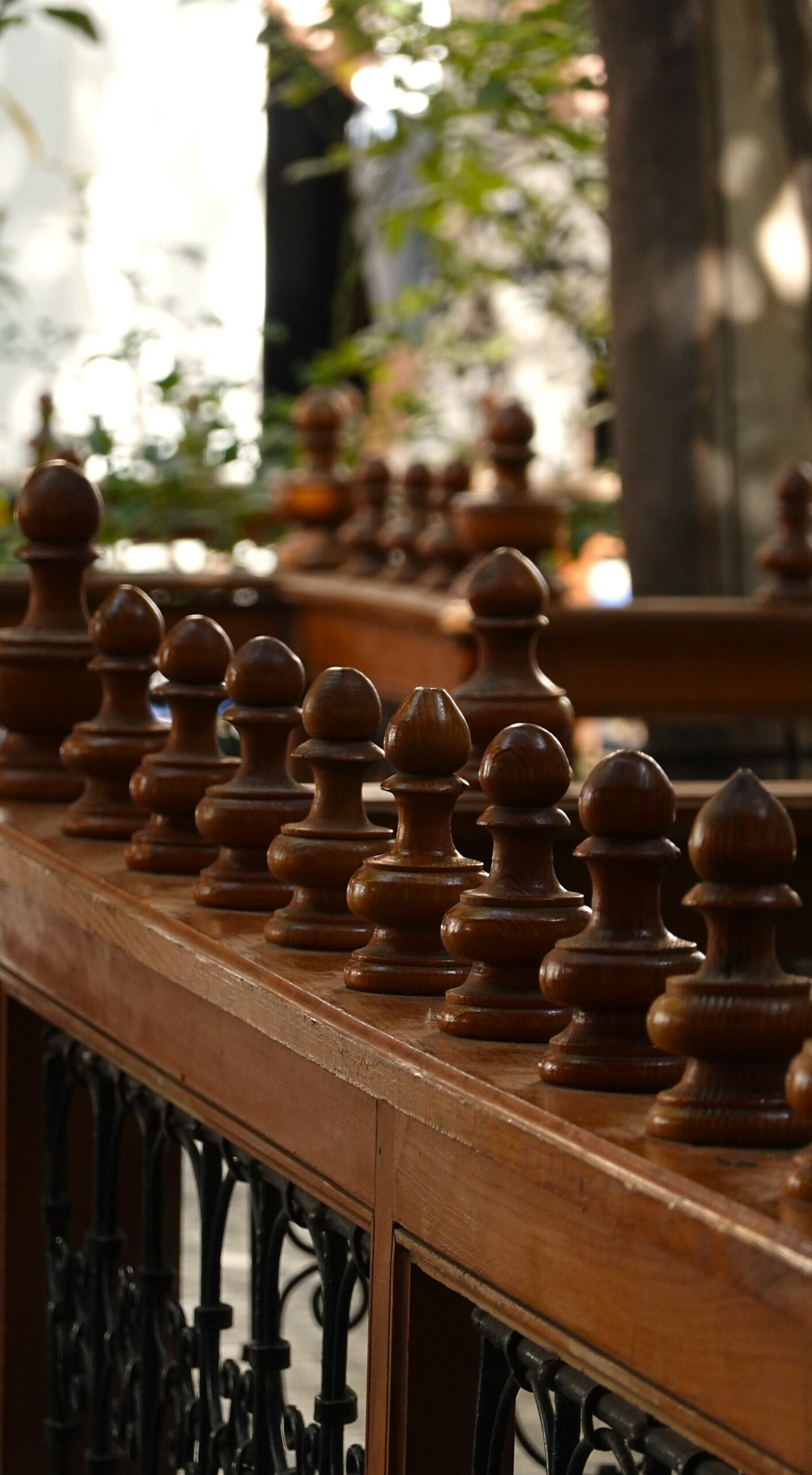
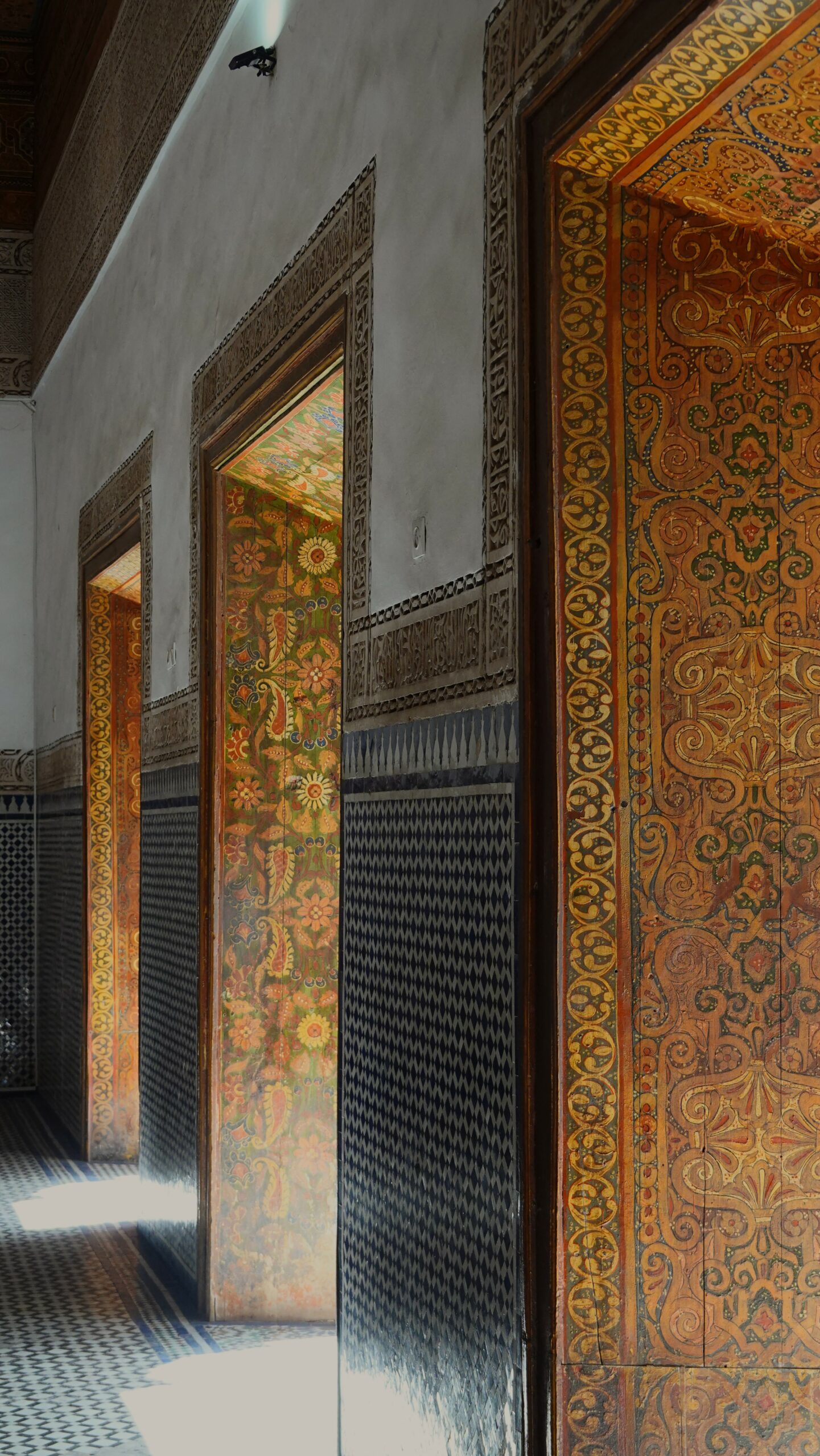
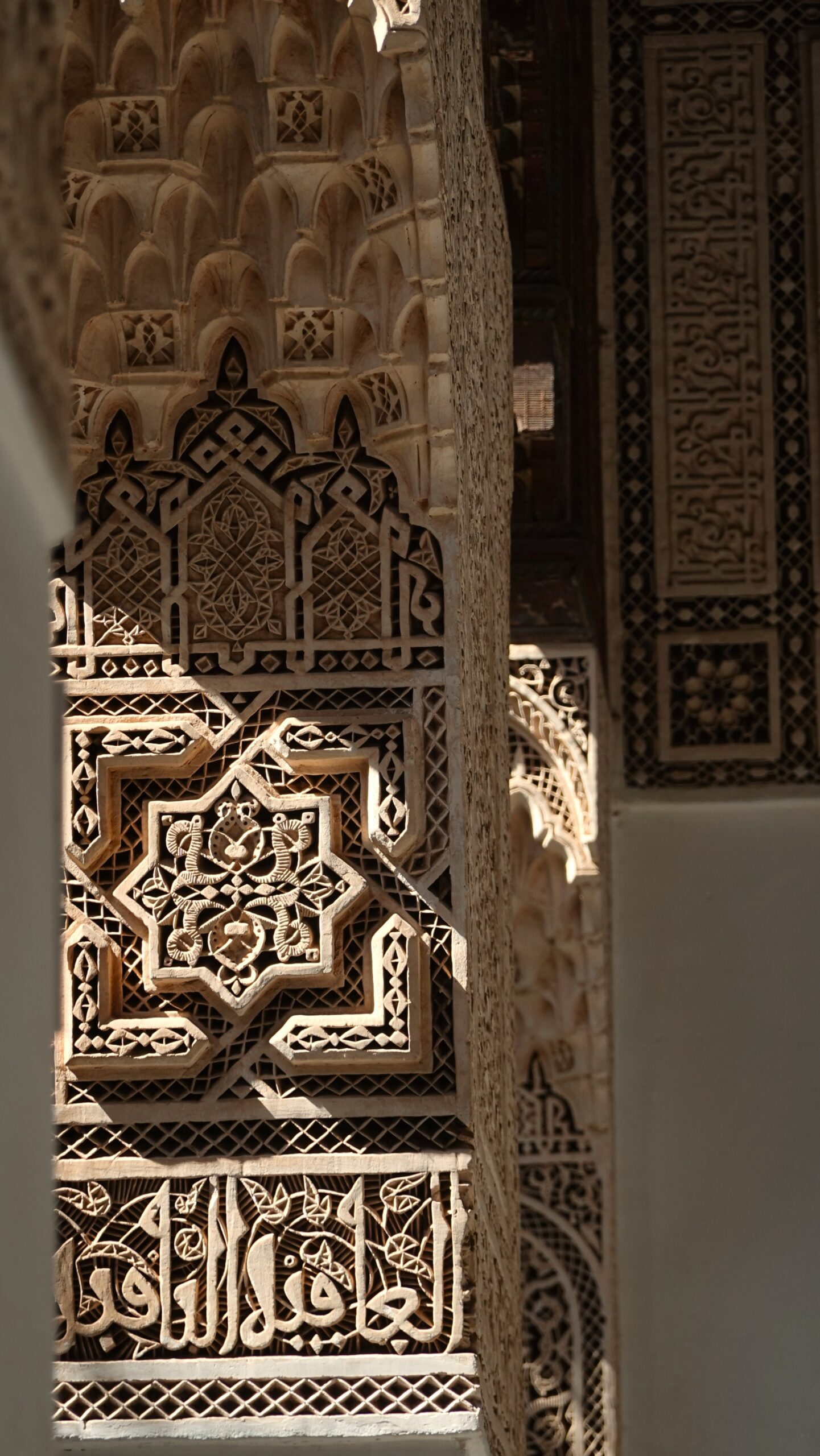
Visiting the Bahia Palace Today:
The Bahia Palace is now a major tourist attraction in Marrakech and one of the best-preserved historical sites in the city. While parts of the palace are still used for royal and governmental functions, much of it is open to the public for exploration.
- Main Attractions:
- The Grand Courtyard, with its stunning marble floor and intricate stucco work.
- The Harem section, where Ba Ahmed’s wives and concubines lived, featuring secluded gardens and beautifully decorated rooms.
- The private apartments and reception halls, each showcasing the luxurious lifestyle of the palace’s inhabitants.
- The lush gardens, filled with fountains, flowers, and citrus trees, offering a peaceful escape from the bustling city.
Practical Information:
- Opening Hours: The palace is typically open daily from 9:00 AM to 5:00 PM, but hours may vary depending on holidays or official events.
- Entrance Fee: Admission is usually around 70 MAD (Moroccan dirhams).
- How to Get There: Located in the medina (old city) of Marrakech, Bahia Palace is near other major landmarks like the Djemaa el-Fna square and the El Badi Palace. It is easily accessible on foot or by taxi.
Visiting the Bahia Palace offers a fascinating journey into Morocco’s royal past, where you can admire the artistry and craftsmanship that defined 19th-century architecture and experience the tranquil ambiance of the palace gardens.
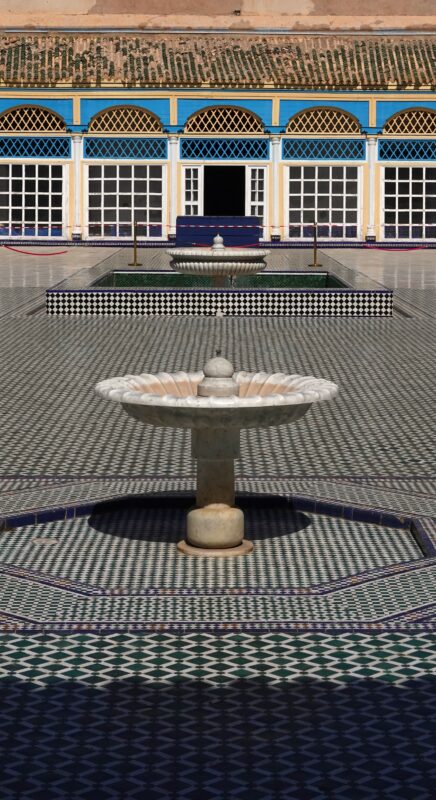
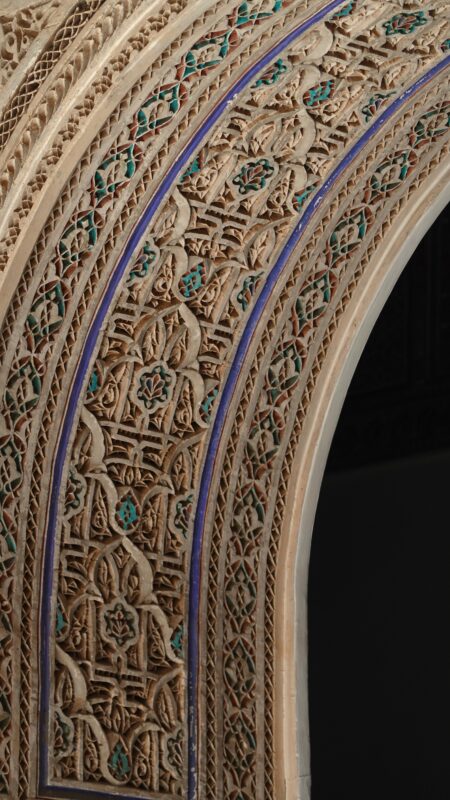
Central Square Night Market | Djemaa el Fna Square
By day, the square is bustling with street performers and musicians but it truly comes alive at night when it transforms into a massive food market, drawing locals and tourists alike. The night market offers an authentic culinary experience, with dozens of food stalls offering a variety of traditional Moroccan dishes, street food, and unique flavors.
What to Expect at the Night Market:
At night, hundreds of food stalls are set up in the square, offering a wide range of Moroccan dishes. You can explore the flavors of the following popular dishes:
- Tagine: A slow-cooked stew of meat and vegetables cooked in a traditional clay pot.
- Couscous: A dish made from steamed semolina grains, often served with meat, vegetables, and rich sauces.
- Mechoui: Spit-roasted lamb seasoned with Moroccan spices.
- Harira: A traditional Moroccan soup made with tomatoes, lentils, chickpeas, and lamb or beef.
- Moroccan BBQ: Grilled meats, kebabs, and sausages such as merguez.
- Snail Soup: A delicacy served in a spiced broth, popular among locals.
- Fresh Juices: Especially orange juice, a refreshing must-try.
- Pastries: Moroccan sweets like chebakia (fried dough coated in honey) and msemen (flatbread served with honey).
The atmosphere is lively, with diners seated at communal tables under the stars, surrounded by the sounds and smells of grilling food, sizzling pans, and the hum of conversations.
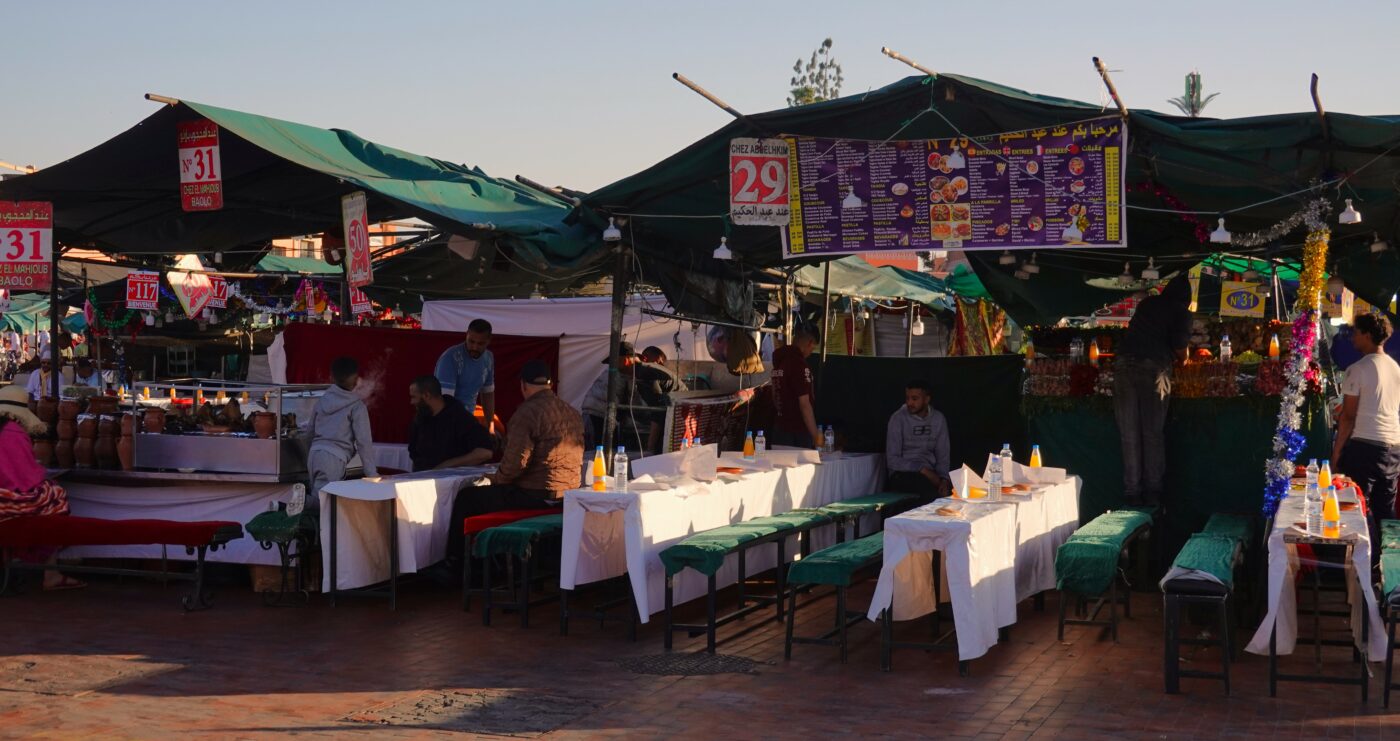
Visiting the Djemaa el-Fna Night Market Today:
The night market in Djemaa el-Fna is an essential part of your 4 days in Marrakech, offering an authentic culinary experience and immersion in the local culture. Here’s what to know for your visit:
- Opening Hours: The night market starts around sunset and lasts until late into the night (around 11 PM or midnight). The square remains lively for several hours after dark.
- Food Stalls: There are numbered food stalls, and while most offer authentic, delicious food, it’s good to walk around and see what each stall is offering. Some vendors may be more tourist-focused, so exploring for a mix of locals and tourists can help find more traditional flavors.
- Cost: The food is generally affordable, and prices vary by dish. A full meal can cost anywhere between 50 to 150 MAD depending on what you order.
- How to Get There: Located at the center of Marrakech’s medina, Djemaa el-Fna is accessible by foot if you are staying nearby, or by a short taxi ride from other parts of the city.
Tips for Visiting:
- Hygiene: While most stalls maintain good hygiene, it’s advisable to check for cleanliness. Drinking bottled water is also recommended.
- Local Culture: It’s customary to engage with the vendors and fellow diners, and bargaining is often part of the experience for non-food items.
- Entertainment: Besides food, the square offers live performances, music, and street entertainers that make the visit even more memorable.
The Djemaa el-Fna night market is not just a place to eat—it’s a cultural experience, providing a window into Moroccan life and its rich food traditions. Whether you’re sampling street food, watching performances, or simply soaking up the atmosphere, it’s an unforgettable part of Marrakech’s vibrant nightlife.
DAY III
The third day of our 4 days in Marrakech, we leave the city of Marrakech and head to the desert for a day of complete relaxation at the Agafay Luxury Camp.
Agafay Luxury Camp
Agafay Luxury Camp is a unique desert retreat located in the Agafay Desert, a stone desert (or “rocky desert”) located about 30 kilometers southwest of Marrakech. Though not a sand desert like the Sahara, the Agafay Desert features stunning barren landscapes, rolling hills, and panoramic views of the Atlas Mountains.
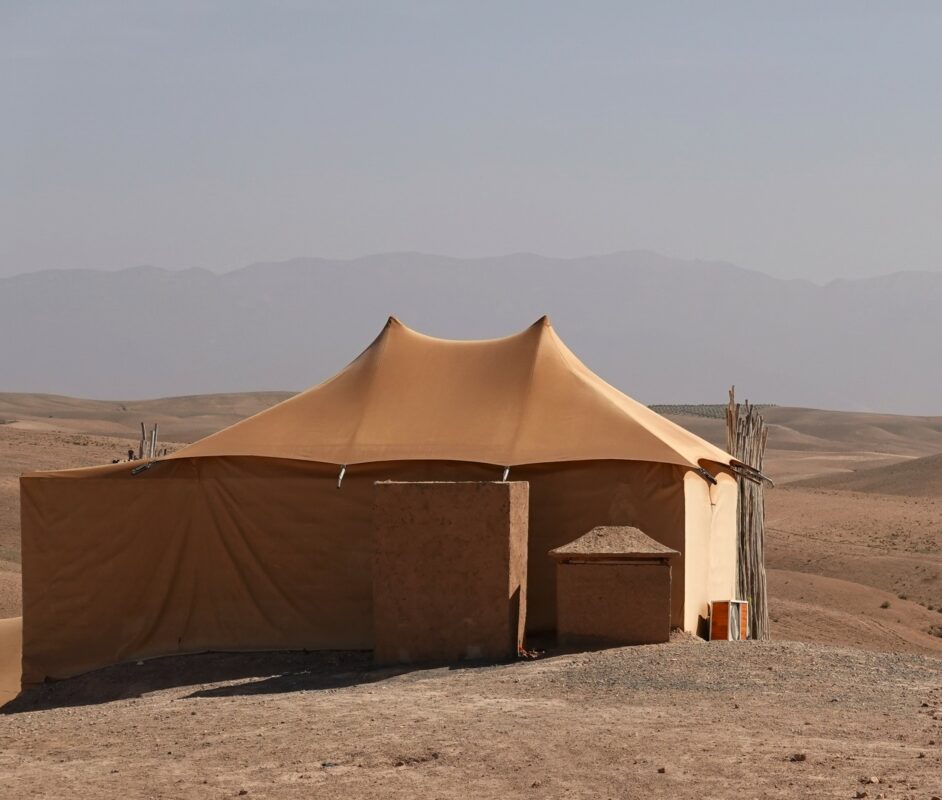
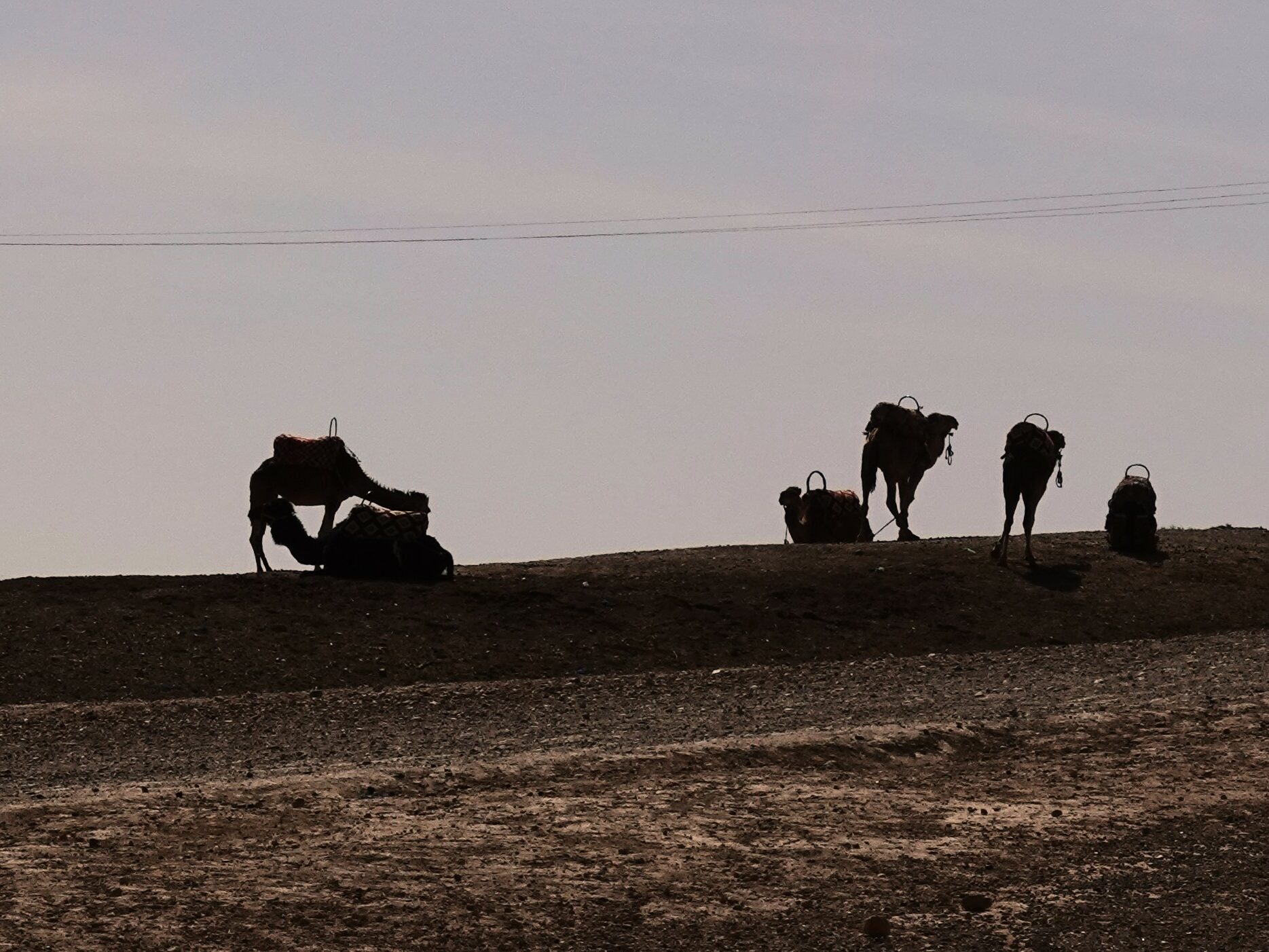
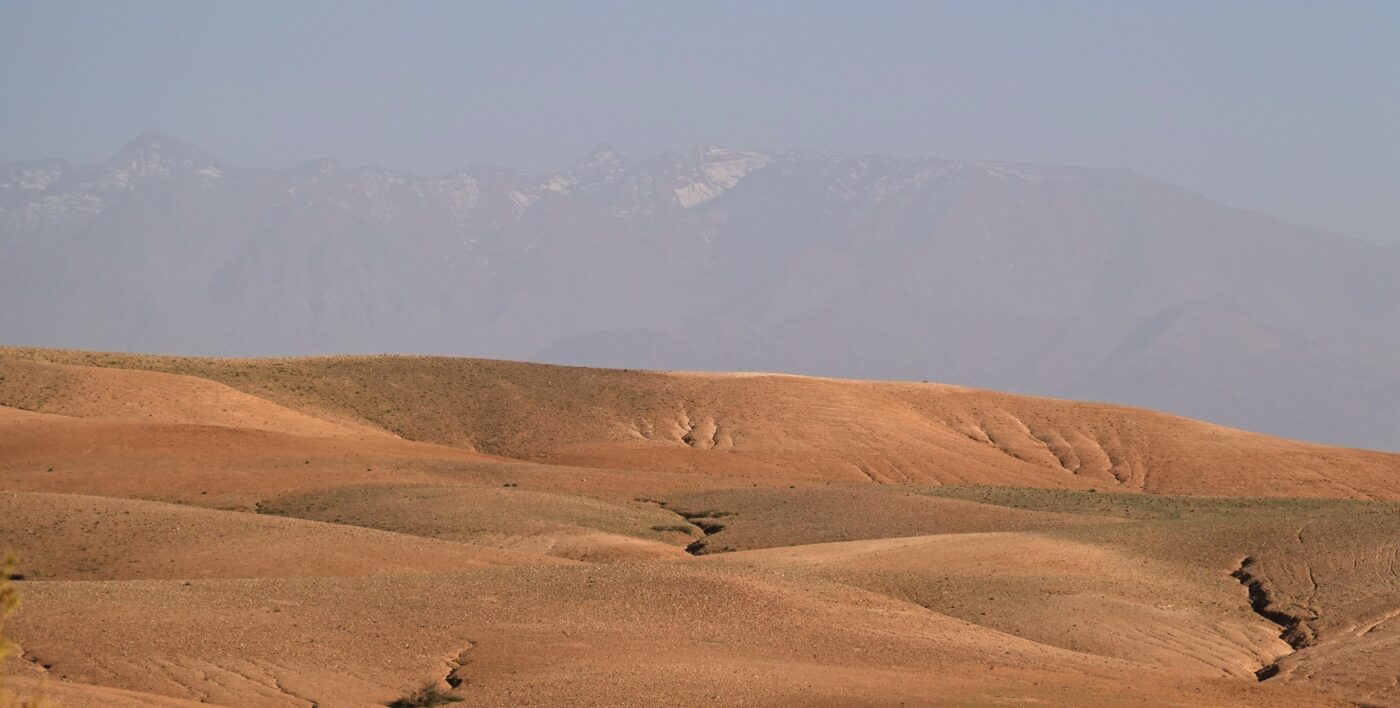
Agafay Luxury Camp has become one of the most popular choices for travelers seeking a blend of adventure, relaxation, and luxury, providing a gateway to the desert’s beauty while maintaining close proximity to Marrakech.
Given the amount of information we can only provide at the Agafay Luxury camp, we decided to write a separate blog for the Agafay Luxury Camp. You can read the blog via this link.
When spending 4 days in Marrakech, we highly recommend a trip to Agafay Luxury Camp!
DAY IV
Day 4 of our 4 days in Marrakech is the day we leave Marrakech. Our plane left in the afternoon, so we had a little spare time to see one last sight. We started the day with a delicious coffee at a local coffee shop. With a nice coffee in our hands, we continued on our way to Le Jardin Secret.
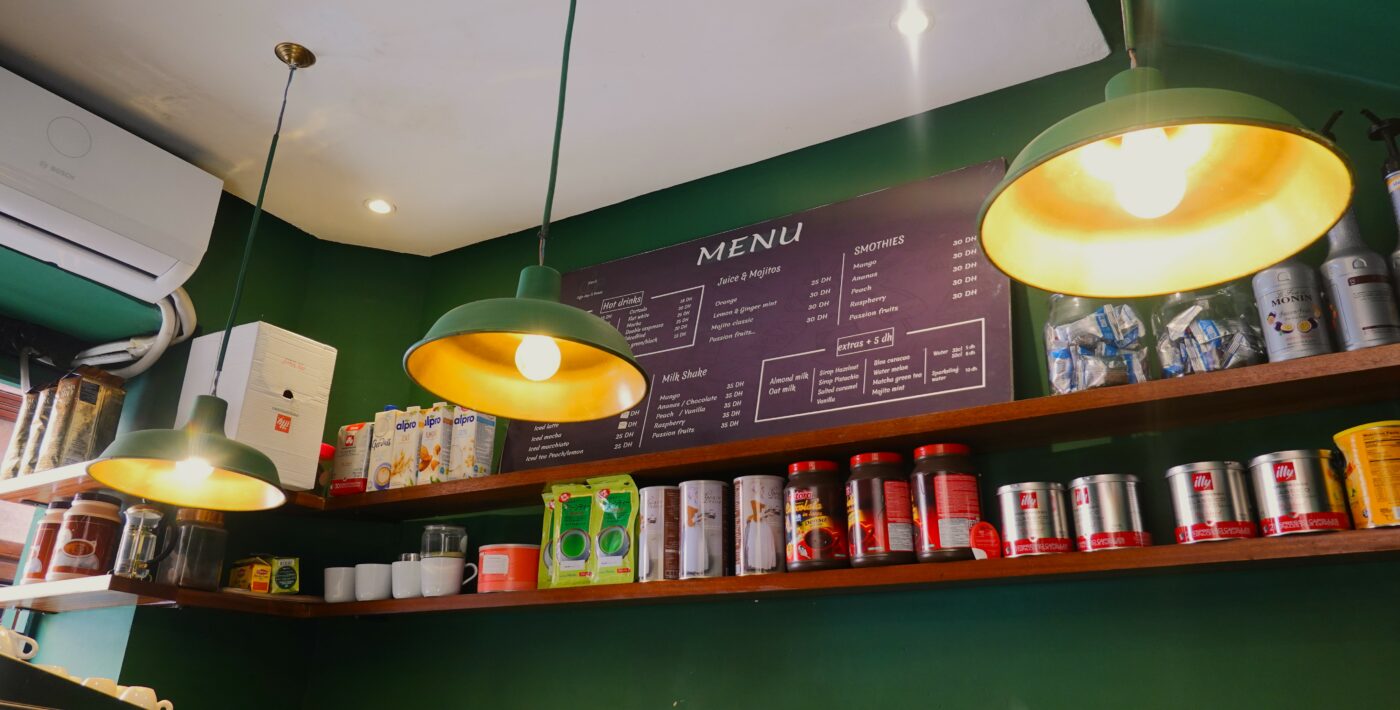
Le Jardin Secret
Le Jardin Secret is a restored historical garden located in the heart of Marrakech’s medina, offering a serene oasis amidst the bustling city. The site dates back to the 16th century, during the Saadian Dynasty. It was later transformed in the 19th century under the reign of the Alaouite Dynasty. Today, Le Jardin Secret is a beautifully landscaped space showcasing traditional Islamic and Moroccan garden design.
Le Jardin Secret can be divide into two distinct gardens, each reflecting traditional Islamic and Moroccan design principles:
The Exotic Garden: This section showcases a variety of plants from around the world, including tropical and Mediterranean species. It highlights the botanical diversity that flourished in Morocco due to its historical trade connections.
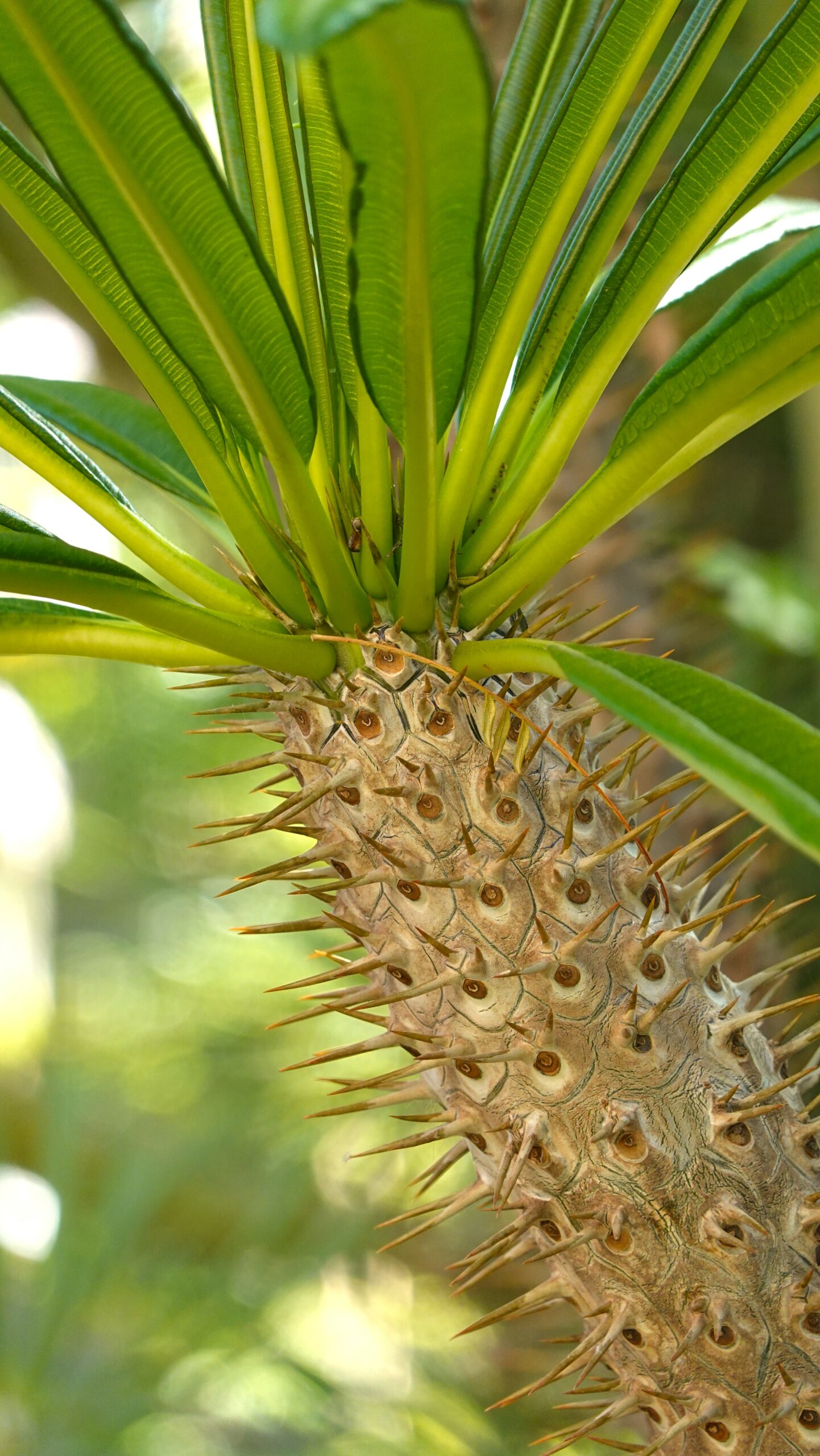
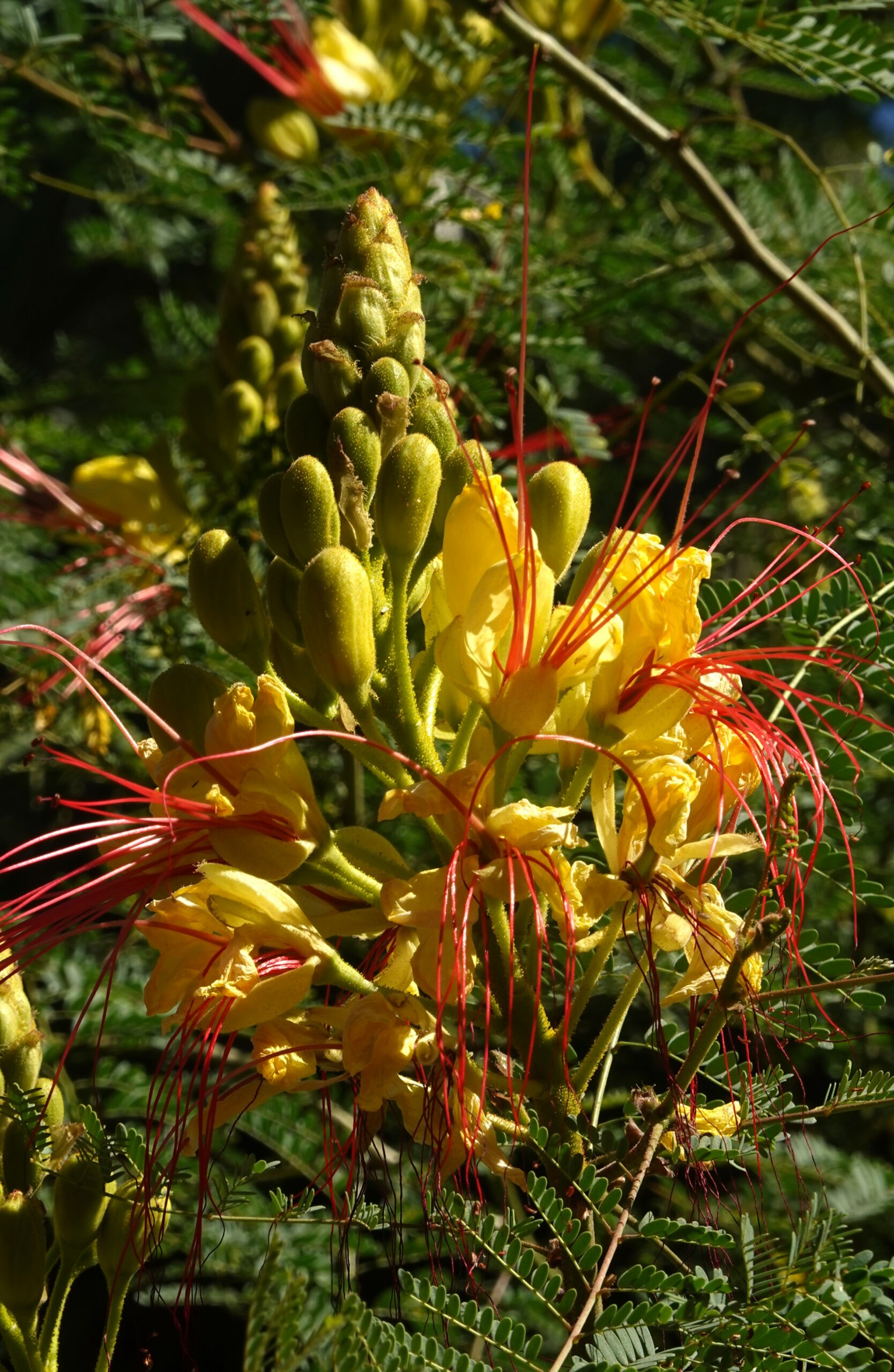
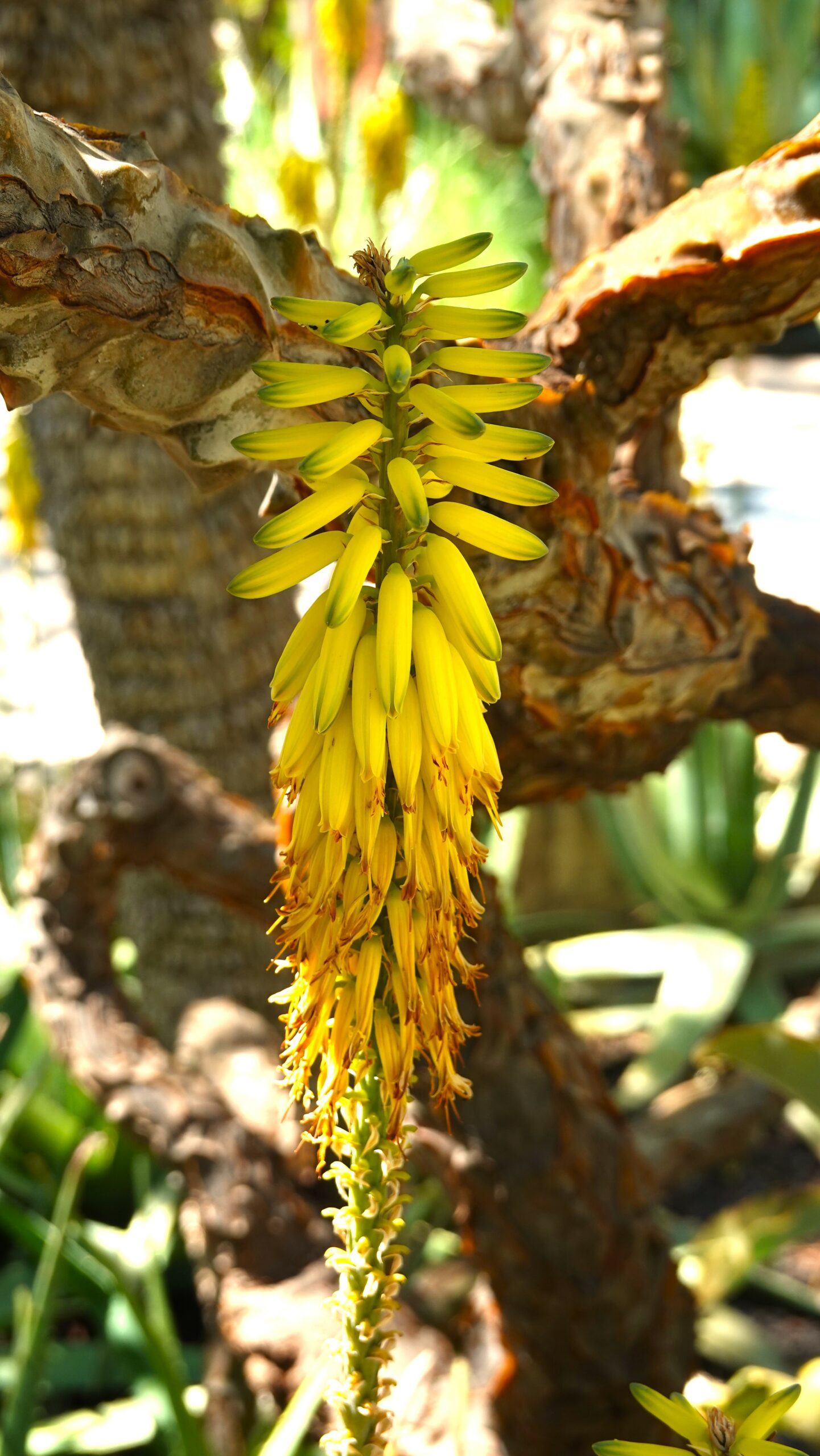
The Islamic Garden: The area design is based on the classic layout of Islamic gardens, symbolizing paradise with its symmetrical paths, water channels, and fountains. The space is divided by four water channels that represent the four rivers of paradise in Islamic tradition, emphasizing the importance of water as a source of life.
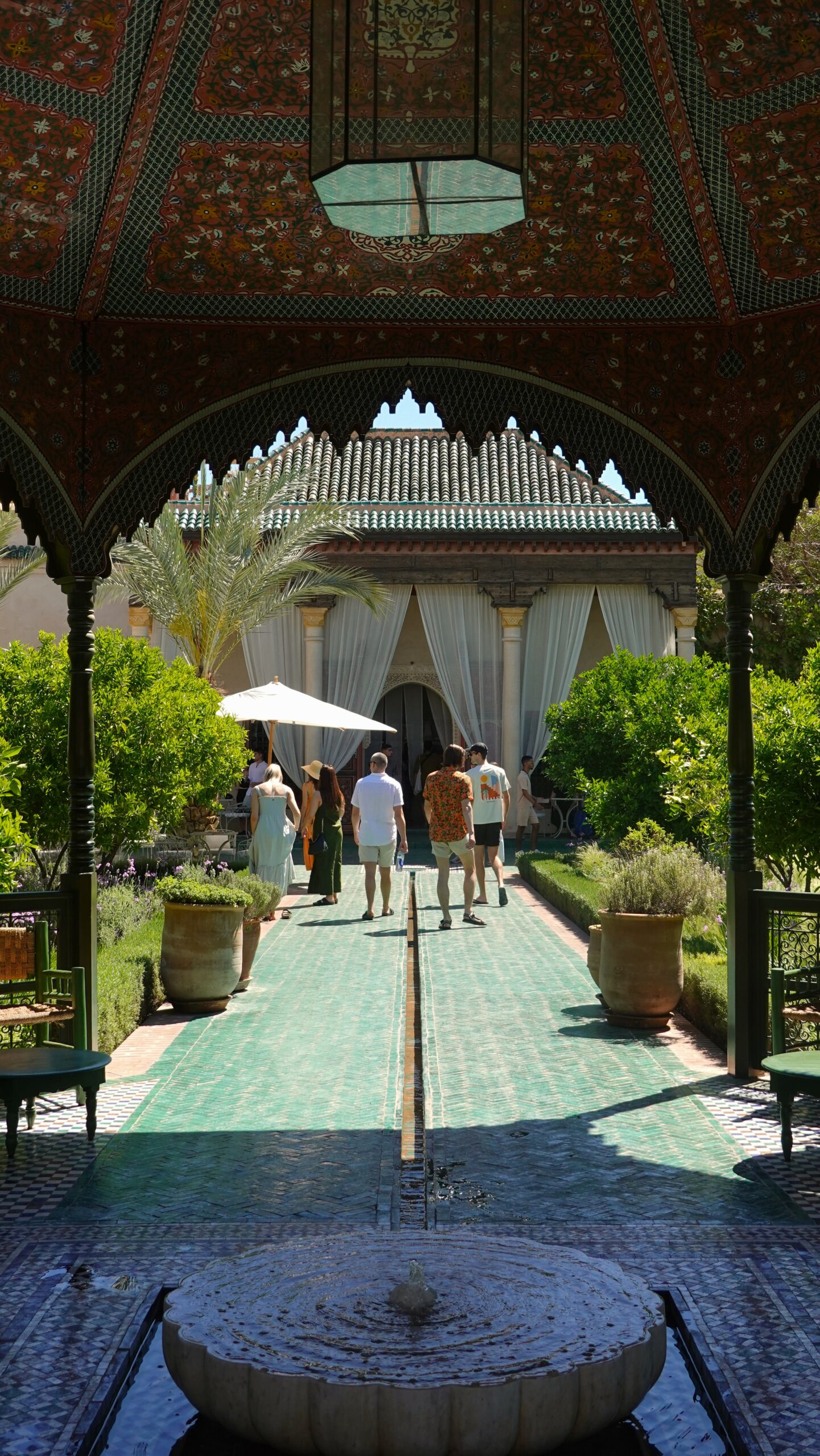
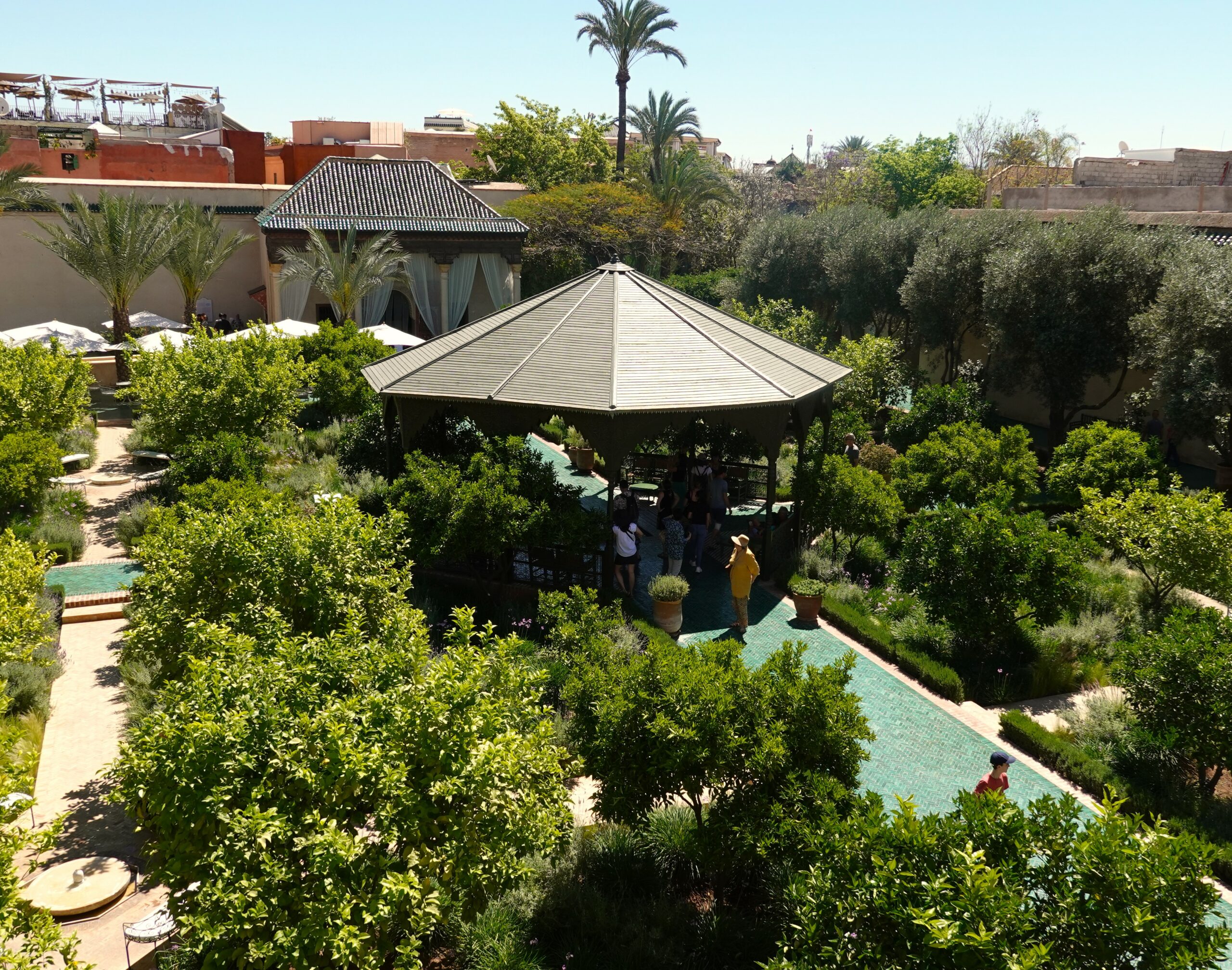
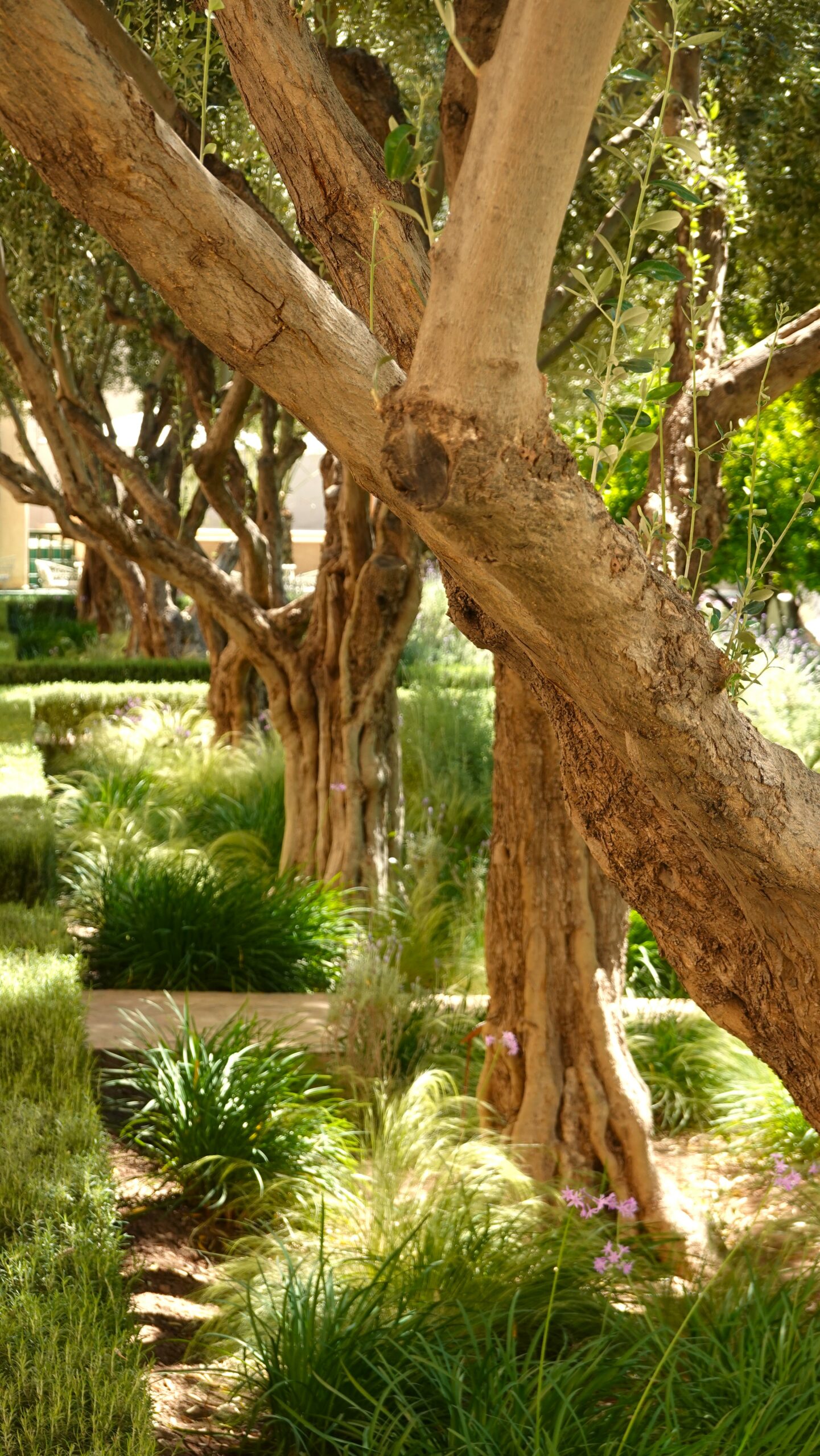
Visiting Le Jardin Secret Today:
Le Jardin Secret is an ideal destination for those looking to escape the busy streets of Marrakech’s medina and enjoy a peaceful, historical garden experience. The site also features a small museum, explaining the history of the garden and the role of Islamic gardens in Moroccan culture.
- Main Attractions:
- The tranquil pathways of the Islamic Garden and its stunning symmetry.
- The Exotic Garden, with its diverse plant species and vibrant colors.
- The viewing tower, which offers panoramic views of Marrakech’s medina and the nearby Atlas Mountains.
- The museum and exhibition detailing the history of the garden’s restoration and Islamic garden design principles.
Practical Information:
- Opening Hours: Le Jardin Secret is generally open daily from 9:30 AM to 6:30 PM (until 7:30 PM in summer), though hours may vary by season.
- Entrance Fee: Admission is around 80 MAD (Moroccan dirhams) for adults and discounted for children and students. A ticket to the garden includes access to the museum and the tower (for an additional fee).
- How to Get There: The garden is located in the heart of Marrakech’s medina, a short walk from other attractions like the Mouassine Mosque and Djemaa el-Fna square. It is easily accessible on foot or by taxi from most parts of the city.
Tips for Visiting:
- On-site Café: The garden features a lovely café, offering visitors a chance to relax and enjoy tea or light refreshments while taking in the peaceful surroundings.
- Photography: Le Jardin Secret is a photographer’s paradise with its vibrant plants, stunning architecture, and scenic views from the tower.
Le Jardin Secret provides a quiet, historical escape from the busy medina during your 4 days in Marrakech, making it a must-visit for those interested in garden design, Moroccan history, and Islamic architecture.
End of our Journey in Marrakech
We had 4 wonderful days in Marrakech. This was our first experience in Morocco, and it definitely tastes for more. We captured our trip in a vlog which you can view below and on our YouTube channel, and when you like to read at your own pace you can read this blog.
4 days in Marrakech we found to be the perfect number of days. We felt like we had seen everything, but at the same time we could have stayed there quite a bit more. In our opinion, this is the best feeling while visiting a destination. Since you don’t feel like you stayed there too long and also don’t feel like you didn’t get to see everything you wanted to see.
* This post may contain affiliate links, which means we may earn a small commission if you click through our link and make a purchase at no extra cost to you.

